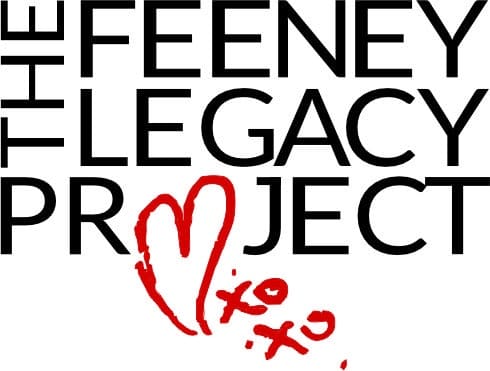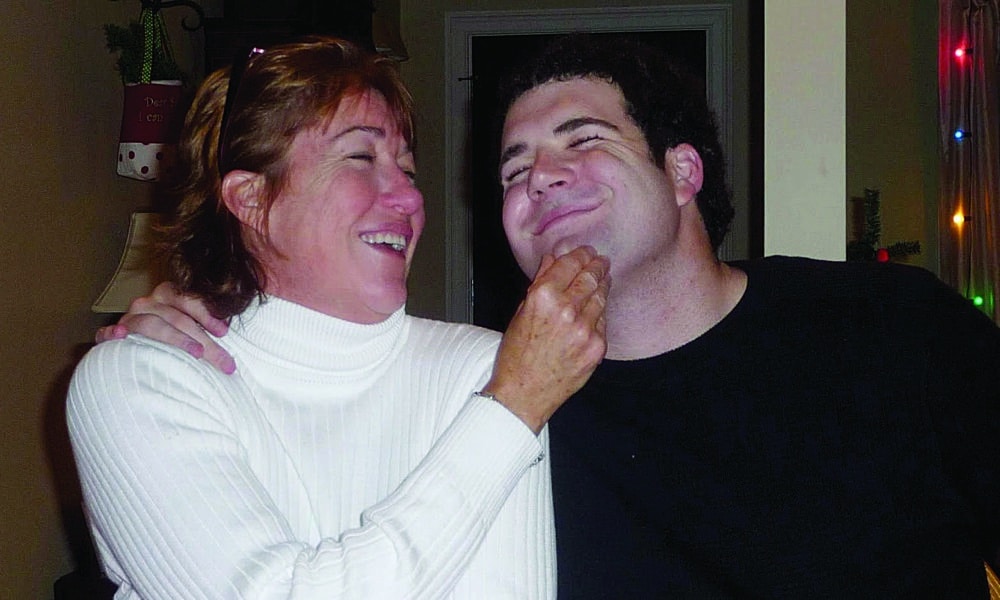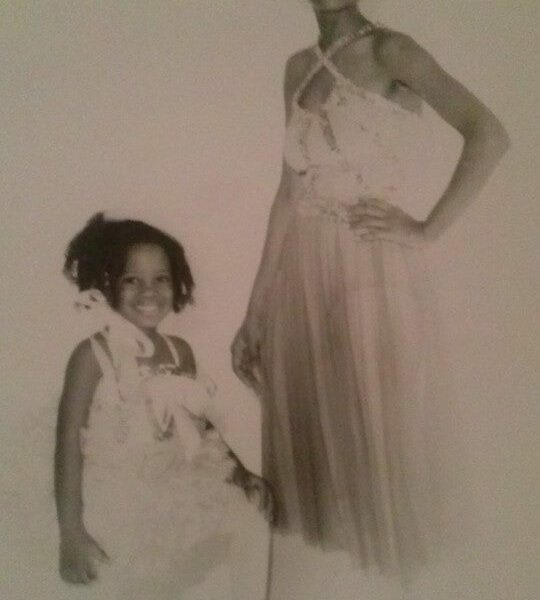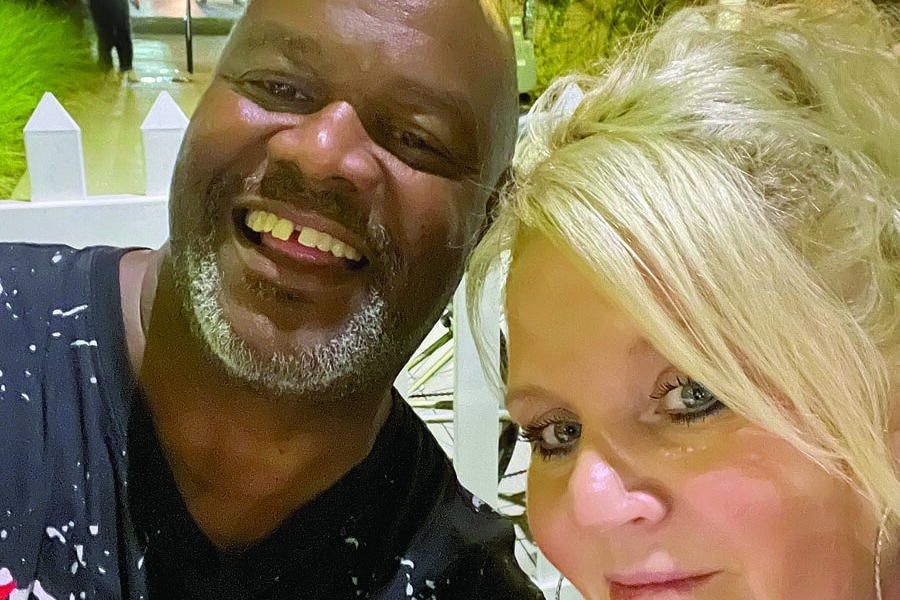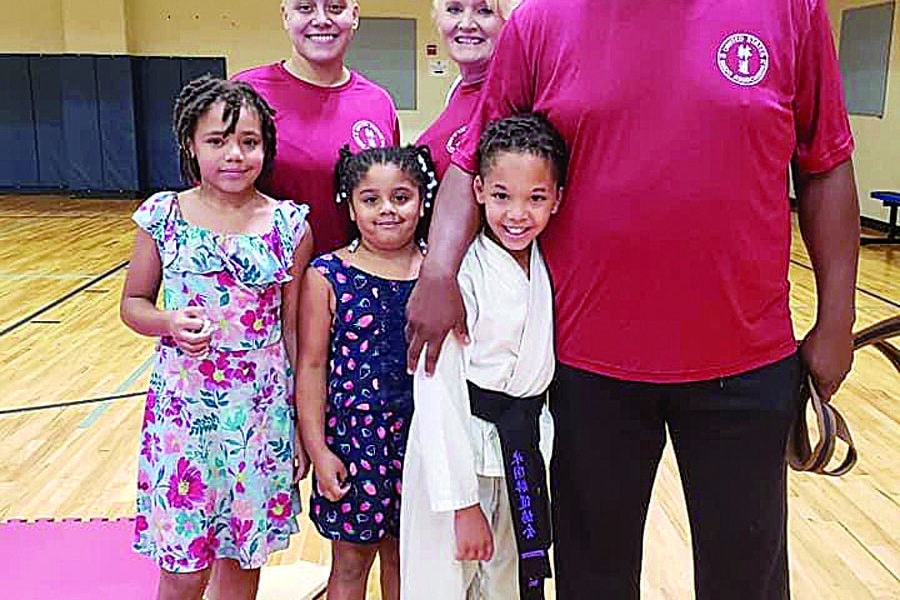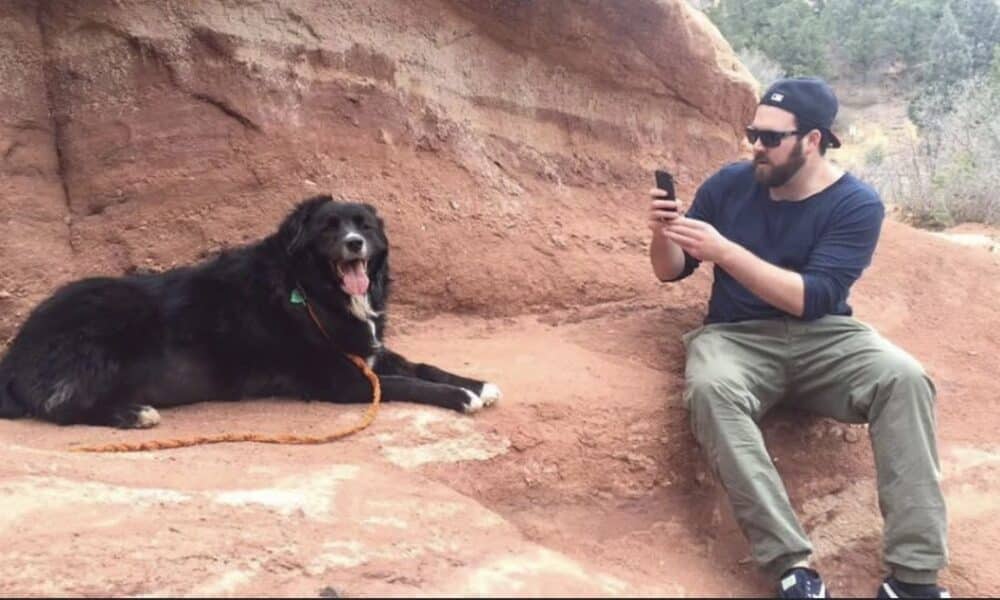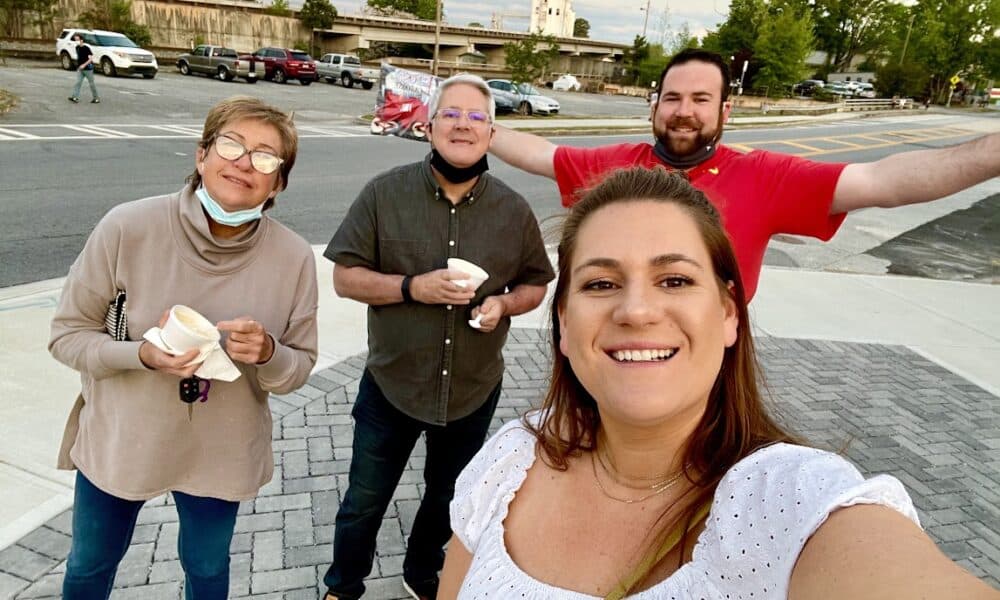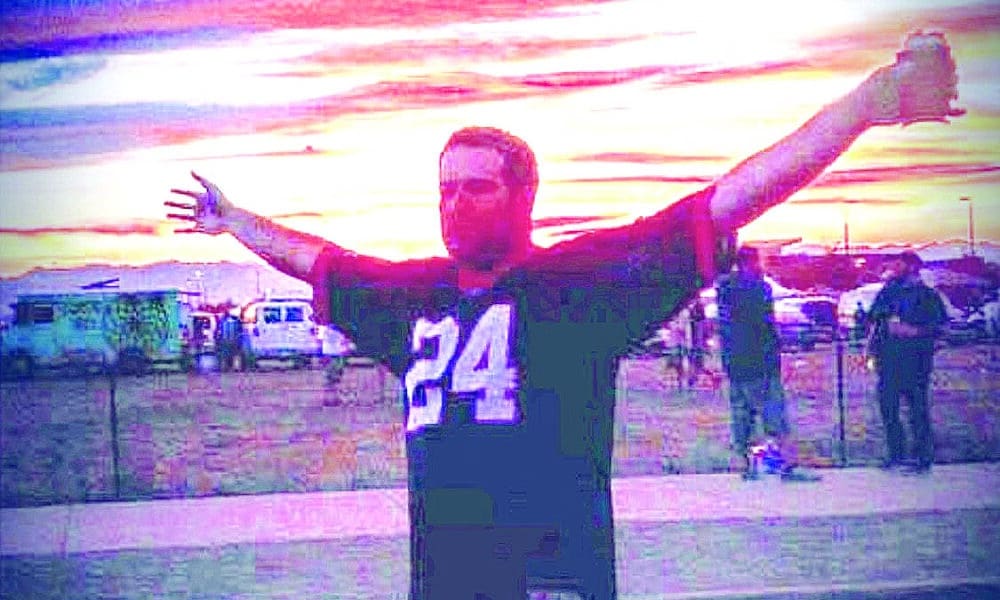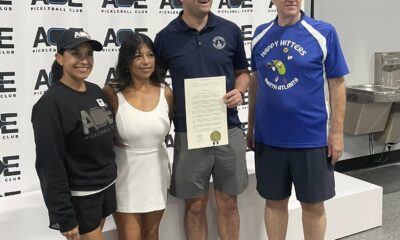Community
Good Grief: Life After Loss, Part 2
Published
2 years agoon
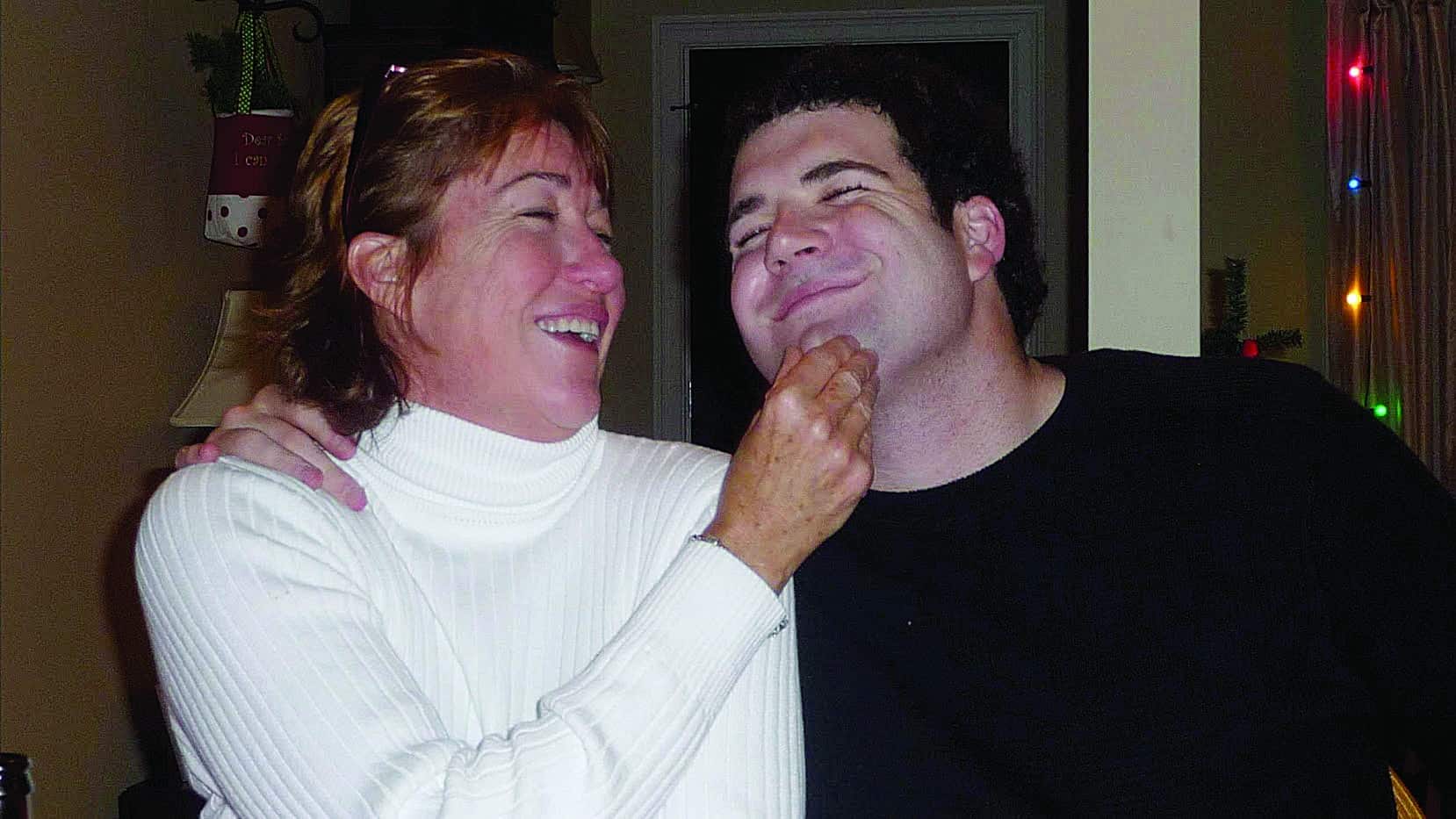
Traumatic Loss Spurs a Call to Action
Part 2 of 3
We sadly lost the legendary Tina Turner this year. The superstar didn’t fear death. She believed it was just part of life.
But what happens when death is not at all part of the natural order of things? What happens when a nine-year-old child loses her mommy at the hands of an ex-boyfriend, when a mother of three is senselessly murdered or when a son in the prime of his life is lost to a drug overdose?
These unspeakable tragedies led to the making of a grief and trauma counselor, a push towards legislation to protect drivers of ride-hailing apps and the launch of an organization aimed at saving lives.
“My mom was murdered when I was nine.”
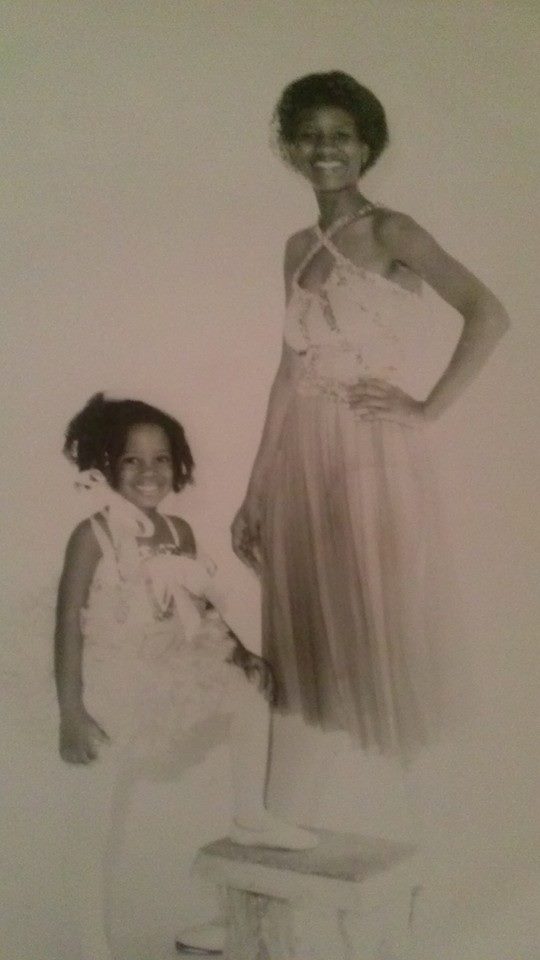
When she was a little girl, Grief, Trauma and Domestic Violence Therapist Danielle Edwards went to school one morning, not knowing she’d never see her mother again. Her mother’s ex-boyfriend, Nat — whom Edwards knew well and had visited with — had been stalking her mother. He was a correctional officer.
A month prior, her mother was hospitalized after Nat assaulted her in front of their home. On the day Edwards’ mom went to get a protective order, Nat followed her to a friend’s house and shot both her and her friend to death.
The house was full of people when Edwards came in from playing that day; the pastor, the police, everyone was there except her mom. Her aunts were crying.
Even at such a tender age, Edwards was able to deduce her mother had been killed. Before her grandmother could share the sad news, Edwards asked, “Is she dead?”
A white rose represented her loss at the next Mother’s Day brunch, but Edwards did not receive any counseling. Though her grandmother had talked to her about going to see a “different kind of doctor,” her uncle didn’t feel therapy was necessary.
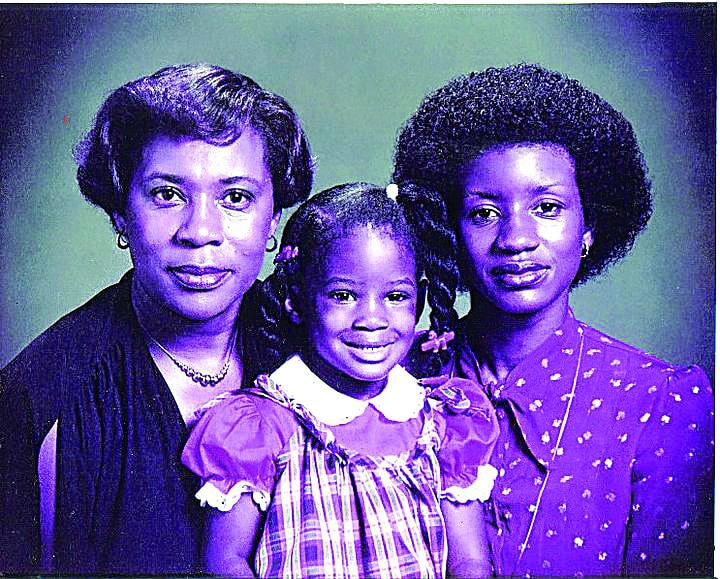
Adults ultimately make that call for children. Depending upon a family’s cultural views about psychotherapy, some children may be denied services that would undoubtedly be helpful.
Domestic violence and homicide
Imagine being haunted by thoughts of what the last moments were like for a relative who was murdered.
“Finding out your loved one died in a violent way is traumatic. It feels like a violation. Someone was taken from you. You don’t get to tie up loose ends or say good-bye. You can’t believe this horrible thing has happened,” Edwards shared.
Edwards was impacted by domestic violence and her mother’s homicide as well as the subsequent grief she experienced as a child but, unfortunately, did not receive any wrap-around services.
As a child, she didn’t ask a lot of questions. She understood her mother wasn’t coming back and remembers being unable to go to bed alone for a while.
“I don’t recall how I did immediately, but eventually I did fine. I remember looking up at the stars and asking God, “Why?” I wanted to call Heaven,” Edwards recounted.
Today, Edwards is part of the Georgia Murder/Suicide Response Network and proud of the progress the state is making to provide families with the tools necessary to process this very specific type of loss and grief.
“It felt like a natural progression from my own experiences to an interest in providing grief support to others,” she said.
Full circle
Thirty years after losing her mother, Edwards found herself sitting under those same stars, providing support to grieving kids at Camp MAGIK. “It felt like such a full circle moment for me,” she said.
Having seen how grief impacted her own family, Edwards is an advocate for kids receiving help. “I see it in the work I do at the grief camps. Survivors need support to navigate grief as a family particularly if there are children,” she said.
There’s now a program through the Georgia Commission on Family Violence focused on providing assistance to people impacted by domestic violence, murder and suicide.
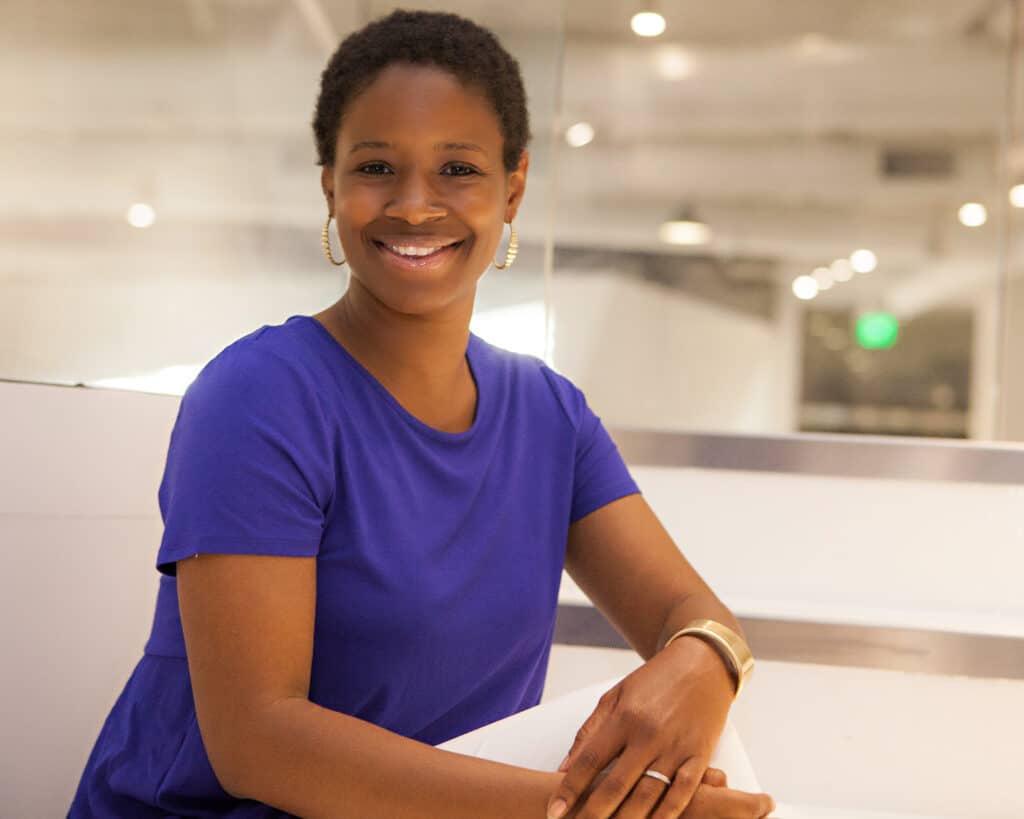
Caught in the crossfire
A 31-year-old single mother of three trying to make ends meet, Lauren Allen lost her life to a shooter one night in Lithonia. Peachtree Corners Councilman Joe Sawyer and his wife Kim were alerted that something terrible had happened to their daughter on the evening of November 21, 2022.
A friend who regularly stayed on the phone with her for safety — they were both Lyft drivers — heard the moment Lauren was shot.
“I was nervous, in a panic, pacing the floor, trying to call around everywhere,” Kim said. “We tried to find out what was going on. The detectives confirmed her death at about 2 a.m.”

There was no getting close to the crime scene. The Sawyers relied on WSB-TV journalist Larry Spruill Jr. who was covering the story for information.
Lauren had dropped off a passenger who was disputing with the father of her children during the ride to his house. Seven months pregnant, the passenger was on her way to pick up her baby. She asked Lauren to wait for her.
“All we know is that the man came running out of the house, chasing the girl with a 22-assault rifle. He started shooting but she jumped back in the car, and they were able to get away. He chased them on foot.
“At some point, Lauren pulled over to call 911. It was dark. The man ran up to the passenger side and shot up the car. The passenger got away, but Lauren wasn’t able to; she was still in her seatbelt. She was found hanging out of her car door,” Councilman Sawyer shared.
Eyewitnesses reported seeing the car “light up with gunfire” and smoke pouring out of the vehicle when a door was opened. The shooter was later killed when officers returned fire at a nearby gas station.
“He didn’t know Lauren was a Lyft driver. She was just doing her job,” Councilman Sawyer said.
The Sawyers, tasked with cleaning out their daughter’s car, were able to count at least 18 bullet holes. They found a photograph of Lauren and her kids in the car. In Lauren’s place in the photo, there was just a bullet hole, but the children’s images remained intact.
Lauren was torn away from her children, family and friends forever because of a quarrel that had nothing to do with her.
The power of community
The social connections forged by the Sawyers during their 34 years together have helped to sustain them in many ways during their darkest hours. Family and friends flooded their home, so they were not alone when they received verification of their worst nightmare.
“There were probably 30 people here. When something happens, we’re all there — brothers, sisters, everybody,” Councilman Sawyer said.
Their church group, surrounding congregations, the City of Peachtree Corners and nearby municipalities reached out to them. Atlanta Mayor Andre Dickens had a proclamation honoring Lauren delivered to her viewing. His representatives were the first to arrive.
Crowell Brothers Funeral Home collected Lauren’s body from the coroner’s office and sheltered Kim from seeing her daughter before she was funeral ready. “I wanted to see her, but they told me to wait, not to see her like that,” Kim said.
One of her oldest friends saw to it that Lauren’s makeup was just right on the morning of the service. The family is grateful to the Senior Pastor of Peachtree Corners Baptist Church, Jay Hackett, for holding Lauren’s homegoing service where she was baptized.
“Grief is hard. Without the community it would’ve been a lot harder. We’ve had a meal train, donations to the Go Fund Me Account (gofund.me/28d0ee33). This made us feel loved. It’s meant a lot to us and helped us make it through,” Councilman Sawyer stated.
Keeping it together
With the help of a well-respected Peachtree Corners attorney, the Sawyers are seeking full custody of Lauren’s children by two different fathers, rather than splitting up the siblings. They had always taken care of their grandchildren, who range in age from 8 to 13, while Lauren worked.
It’s not an easy task for “Mimi” and “Papa” to care for three children but they wouldn’t have it any other way.
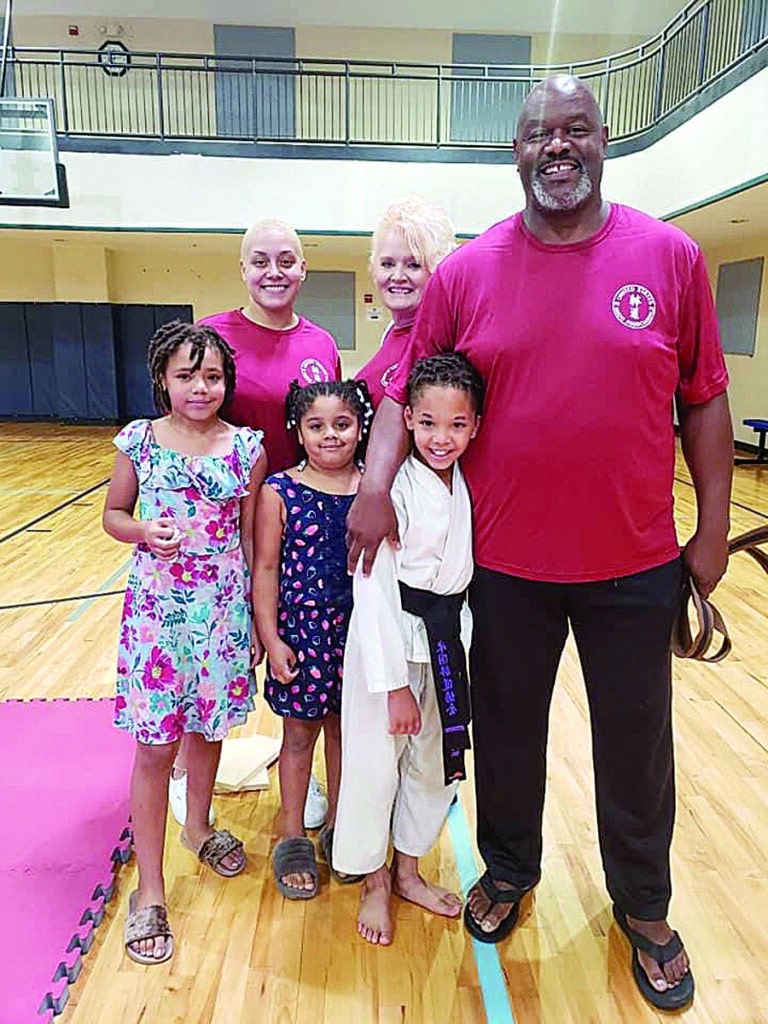
They feel it’s best to keep the children together, though one of the fathers is contesting it. “We’re not trying to keep him away. We want to keep her in an environment with her brother and sister. They’ve grown up together,” Councilman Sawyer said.
In the meantime, the children are in counseling. Kelsey and Kya go to Summit Counseling Center in John’s Creek. Kameron sees Jordan Yates, a licensed professional counselor (LPC) at Christ the King Lutheran Church.
The couple has been to grief counseling once but are challenged to find the time to return. They hope to join a church group in the fall.
When faith is rattled
According to Edwards, it’s not uncommon for bereaved individuals to wrestle with their spirituality. The grief counselor has witnessed people who hadn’t believed in a higher power begin to ponder the possibility after experiencing a loss. Conversely, she’s had clients with a previously ironclad belief system become upset and unsure following the loss of a loved one.
“If you were raised not to question your faith and suddenly you are questioning, you don’t know what to do with that. This is a place where you can talk about it. I’m not going to judge or tell you what to believe. I’m here to provide a space for you to work through whatever it is that’s coming up,” Edwards explained.
Councilman Sawyer found himself filled with hate for six months. “I hated the world. I was torn up, miserable. I couldn’t sleep. I stopped praying. I was too busy asking God why he took my daughter until my sister told me I needed to get rid of my anger because as I go, my family goes,” he said.
Then a friend in London called, urging him to let it go or he’d be consumed by hatred which would in turn, consume his family. When she prayed for him, it felt as though a weight had lifted. He instantly felt different.
That same day, Councilman Sawyer’s sister said, “I don’t know if you’re ready for this, but Lauren just crossed over. She went running to daddy, calling him “Papa”, and hugged him. Daddy was waiting on her in Heaven. Lauren didn’t want to leave you, Joe, because she knew you were in a bad spot.”
Brokenhearted herself, battling a stream of tears and trying to be strong, Kim was relieved when her spouse’s fury dissipated.
“Dealing with it and living with him was not very good. Thank goodness, it’s so much better,” she said. The couple believes things changed for the better because people were praying for them.
To each his own grief
Together they make a strong unit, but Councilman Sawyer and his wife have had some contrasting experiences. What is healing for one can be a trigger for the other. While Kim wishes to hear the 911 call made by Lauren for example, Councilman Sawyer does not.
Hearing “I’m sorry for your loss” is comforting to Kim who finds it difficult when people avoid discussing it. Councilman Sawyer prefers the remark from Senior Pastor of Northpoint Church, Andy Stanley: “I’m not going to say anything. I don’t have the words.”
While Kim is tormented about not having seen her daughter on that fateful day, Councilman Sawyer feels fortunate to have spent some quality father-daughter time with Lauren on the day of her shooting.
Everyone is distinct in their grieving. “It’s hard. You can be talking and all of a sudden you start crying. I see what Kim goes through. This has allowed us to spend more time together. Our marriage has gotten stronger,” Councilman Sawyer said.
Life-saving legislation
Hoping to lobby Georgia State Representatives Scott Hilton and Ruwa Romman, the Sawyers plan a push to have drivers of ride-hailing apps like Lyft and Uber be allowed to carry guns. They realize it’s a politically contentious issue.
According to Councilman Sawyer, it’s concerning that Georgia Governor Brian Kemp passed the permitless carry gun law in 2022, allowing citizens to carry handguns in public without a license or background check. The black community has the highest rate of gun deaths in America; he fears it will only increase as more states pass the same legislation.
The couple would rather see stronger licensing laws in place. They’re eager to work with both parties to achieve their goal. They don’t want what befell Lauren — being helpless in the face of a gunman, armed only with pepper spray — to happen to anyone else’s child.
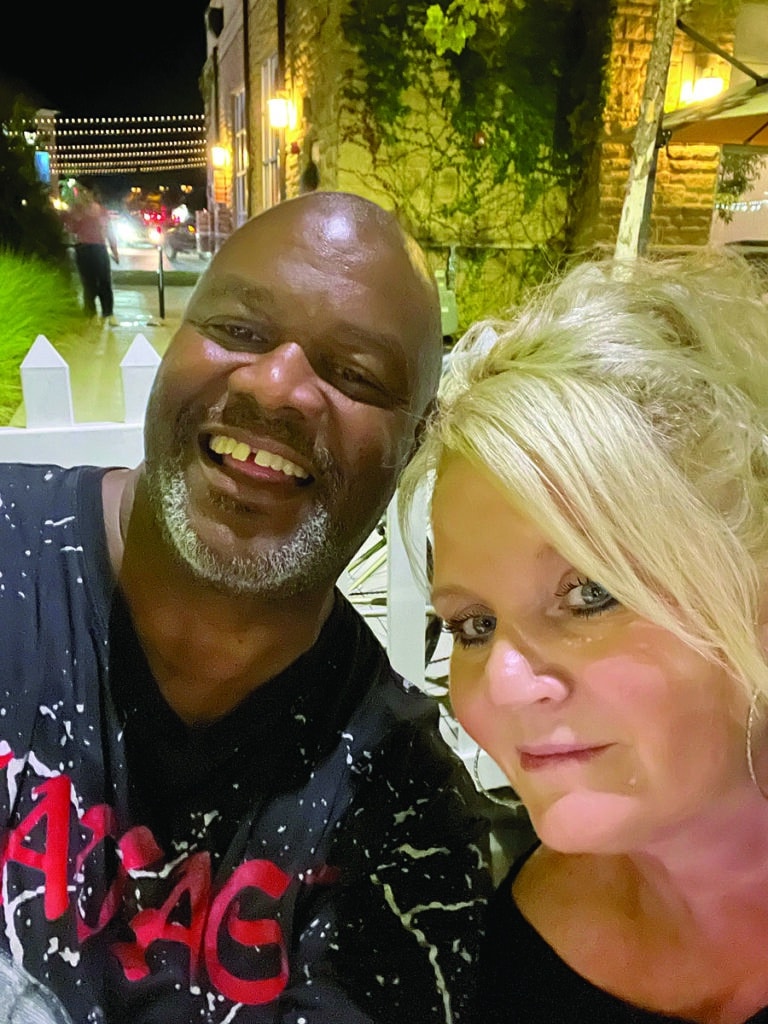
The Sawyers cited a new Atlanta-based ride-sharing app (Black Wolf) that offers a bullet-proof SUV and armed drivers who are highly trained in security. They hope others will follow suit.
“Young people are buying guns. They don’t take classes. They’re going out and killing. It’s happening all over. It needs to be addressed,” Councilman Sawyer exclaimed. “These companies have to look out for their people. We’re arming the public. We have to make sure drivers are protected.”
To honor their daughter’s memory, the Sawyers have set their sights on getting what they hope to call “Lauren’s Law” sponsored, through the House of Representatives, and all the way to the governor’s desk. Fighting for the protection of these drivers is what they believe Lauren would want.
As they brace themselves to face life without her, Councilman Sawyer vowed, “I’m not gonna rest ‘til I get something done.”
Call 911
On April 14, 2022, Kathy Armistead also received an earth-shattering 2 a.m. phone call. “He’s gone,” her son’s friend said. Feeney was 33 years old. He’d gone out with a friend to get some cocaine, telling his girlfriend he’d be back soon.
When jovial, sports-loving, larger-than-life Feeney collapsed while using, his friend must’ve panicked. He didn’t administer CPR or call 911. Feeney died of cardiac arrest.
Armistead pieced a timeline together after emerging from having been frozen in grief for a month and was able to deduce that 30 to 40 minutes had lapsed before anyone dialed emergency services.
When the heart stops, the brain essentially dies after six minutes of oxygen deprivation. The hospital confirmed Feeney was brain-dead but because he was donating his body and organs, he was kept on a ventilator until they were ready to harvest everything usable the following day.
Feeney’s last act was one of the most generous conceivable; multiple recipients have benefitted from his life-saving organs and tissues.
“He was a force, a handsome, 6’3”, scruffy, mountainy-looking guy with a beard. He loved to let everyone know he was there and make everybody laugh. He was a live-life-to-the-fullest kind of guy,” Armistead beamed.
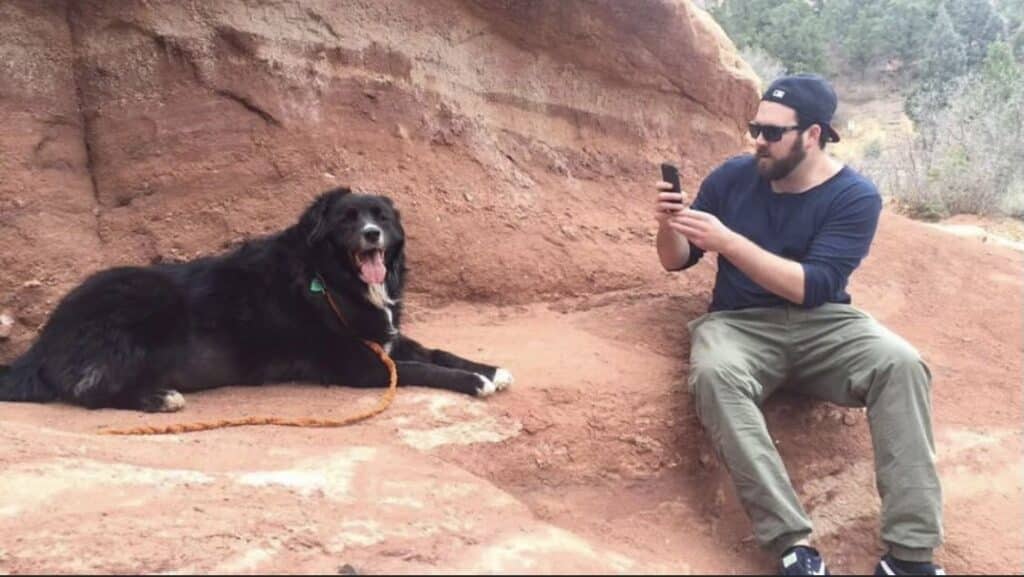
The hardest part of her loss is knowing that it didn’t have to happen. Feeney may have had a second chance at life had those around him acted quickly.
A mother’s good-bye
As she sat by his side in the hospital, Feeney appeared to be asleep. “He looked healthy, relaxed. He had just gotten back from the beach. He was laying like he would take a nap; his legs spread out,” Armistead recounted.
She was able to talk to him, scream at him, tell him how upset she was that he was leaving her this way. “I laughed and cried. It was really good for me, but some people didn’t look at it that way,” Armistead said.
The most majestic animal
As doctors pulled Feeney’s blanket off, Armistead spotted a bad tattoo on her son’s ankle — a giraffe. “I looked at Feeney and laughed, “What the hell is this?”
Friends provided the backstory. Feeney and some former colleagues had decided to get a tattoo. When they asked him what design he wanted, he replied, “I want a giraffe. Don’t you think it’s the most majestic animal in the world?” That sold them on the giraffe; they all got the same one.
Never having had a tattoo, Armistead chose to get one inked onto her own ankle in Feeney’s memory, but she opted for a more stylized giraffe drawn by her artistic mother.
“My daughter, my sister and I got one. Now I look down at my ankle and smile,” Armistead said.
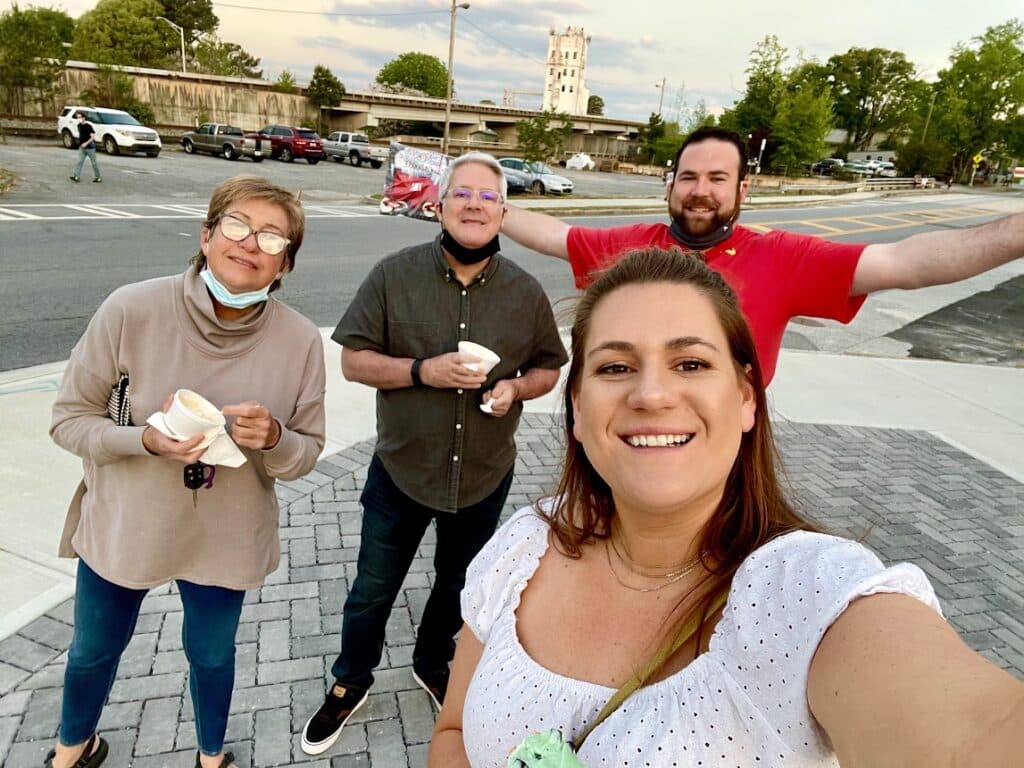
Fred joins Feeney
Feeney’s dog, Fred, was at his funeral service roaming around greeting the attendees who came to pay their respects. A month later, Fred suddenly and unexpectedly passed away. It was another blow for the Armisteads, but they believe Feeney called him home.
At a loss for words
Edwards advises, “Let the bereaved person take the lead. If they want to talk about their loss, don’t change the subject. You don’t have to know what to say. You can just listen. If they don’t want to talk, don’t pry.”
Armistead is alarmed at how hesitant people of all ages are to talk about tragic deaths like drug overdoses, alcohol poisoning or car accidents involving driving under the influence. “It needs to be discussed, not silenced. If we’re quiet, it’ll keep happening,” she said.
Her 35-year-old niece has had 15 friends die since she graduated from college. A friend of Feeney’s shared that he’d been to four funerals the year Feeney passed. Armistead has a friend whose son attended eight funerals in his freshman year of college.
“What’s going on?! Nobody’s talking about it!” Armistead exclaimed.
Determined to break the silence, Armistead explained, “I give Feeney’s story body. I tell the truth about what happened. It makes a difference to the community and the world,” she said. Since risky behaviors are more common among youngsters who imagine themselves invincible, bringing awareness of potential consequences to this demographic is vital.
Realizing that others may be uncomfortable or unsure about how she’ll react, Armistead divulged how it’s awkward for a bereaved individual when nobody asks about it.
“They think I should be over this. That may or may not be true,” she acknowledged. When chatting with individuals who are mourning, Armistead suggests, “Don’t gloss over it.”
Guilt
What of the potential sense of shame associated with losing a child? “I think you’re guilty, no matter what, when your kid dies. It’s a fact. There’s guilt all around it, even if you had nothing to do with it,” Armistead shared.
Losing a child is the worst thing that could ever happen to someone in Armistead’s view, because it’s not the way life is supposed to go. She thanks God every day that she still has her daughter, Lia.
Kids may not comprehend how deeply connected parents are to them. “You have a heart string to each other. When you lose one, it’s just indescribable. It tears your heart apart,” Armistead sobbed.
Inertia was not an option if Armistead was to come through this tragedy. “Being active is a critical piece for me,” she said. “Even when he was in the hospital, I’d have to get out and walk.”
Determined to advocate for Feeney and ensure this doesn’t happen to others, Armistead’s beloved son was gone but her mission was born.
Founding the Feeney Legacy Project
Wishing to spare other parents from having to bear the loss of a child in this way, Armistead founded The Feeny Legacy Project (FLP). FLP is a growing grassroots, woman-led non-profit organization comprised of sisters, aunts and friends spanning in age from 13 to 85.
Launched on the first anniversary of Feeney’s death, the organization spreads awareness about the importance of calling first responders and administering CPR immediately to anyone in medical distress.
Some might hesitate to call 911 out of fear of incrimination for being high, intoxicated or in possession of illegal substances. FLP provides education about the Georgia Good Samaritan and 911 Amnesty Laws which protect those providing emergency care from being arrested. To learn more visit feeneylegacyproject.org.
“We want people to feel safe about calling 911,” Armistead said.
Some people may be unsure about how serious a medical emergency is and consider waiting it out, but acting quickly always results in the best chance of survival: Call 911, administer CPR, save a life.
No certificate needed
In January of this year, TV viewers witnessed a Buffalo Bills trainer jump into action and revive football player Damar Hamlin on the field by initiating CPR. But being someone’s lifesaver doesn’t require a trained professional or even a CPR certification.
FLP has looked to the good work of the American Heart Association and partnered with national organization Parent Heart Watch for accessible, inventive ways to demonstrate performing CPR. Chest compressions can be practiced on a roll of toilet paper!
“I love the idea of teaching everybody to be confident to do CPR — keep the rhythm going and don’t worry if it hurts, you’re saving someone’s life,” Armistead said.
Even if you have no idea what to do in a crisis, someone can walk you through the steps of performing CPR, if necessary, when you dial 911.
FLP is open to partnering with schools, clubs, Scouts, coaches and athletic teams to reach as many people as possible with its life-saving message.
Heartache help
The book “Finding Meaning” by David Kessler was a source of comfort for Armistead. It provides a roadmap to remembering those who have departed with more love than pain. “I hung onto that and learned a lot,” Armistead said.
For several months, she addressed daily journal entries to Feeney in the early morning hours from her porch.
In many cultures cardinals are regarded as messengers from Heaven, symbols that lost loved ones are near. Armistead talks to them as though they’re Feeney, alternating between telling him to stop messing with her, and thanking him for stopping by. She’s always delighted in collecting cardinal figurines and ornaments.
Crying wherever she was — in the grocery store for example — is something Armistead gave herself grace for in the early days. “I did what I had to do,” she said.
She and her husband, Chris, didn’t attempt to process their grief jointly. “It’s almost impossible to do. It doesn’t work,” she said. “The advice I got was: do your thing, let him do his. And that’s what we’ve done. We’ve worked in our own ways,” she shared. They both found grief counseling helpful.
Click here to read part one of “Good Grief: Life After Loss.”
Resources
Grief Support
- Support for Survivors of Murder-Suicides — gcfv.georgia.gov/ssms
- Support for Parents who Lost Children to Murder — pomc.org
- Support for Death after an Overdose — sadod.org
- Support for Death by Suicide — afsp.org
- Support for Parents who Lost Children — compassionatefriends.org
Children’s Grief Support
- Camp MAGIK (Mainly About Grief in Kids) — campmagik.org
The camp is free of charge. Children get a weekend of support surrounded by other grieving kids and licensed professionals facilitate groups. Caregivers can attend too.
- Kate’s Club — katesclub.org
The club brings grief groups to children 5-18 in Metro Atlanta and beyond.
This resource list is provided by:
Danielle Edwards, MSW, LCSW — Grief, Trauma and Domestic Violence Recovery
Edwards Psychotherapy and Consulting LLC.
470-668-5930, info@edwardspac.com
Related
Patrizia hails from Toronto, Canada where she earned an Honors B.A. in French and Italian studies at York University, and a B.Ed. at the University of Toronto. This trilingual former French teacher has called Georgia home since 1998. She and her family have enjoyed living, working and playing in Peachtree Corners since 2013.

City Government
Peachtree Corners Hosts Discussion About the Future of Local Policing
Published
6 days agoon
May 12, 2025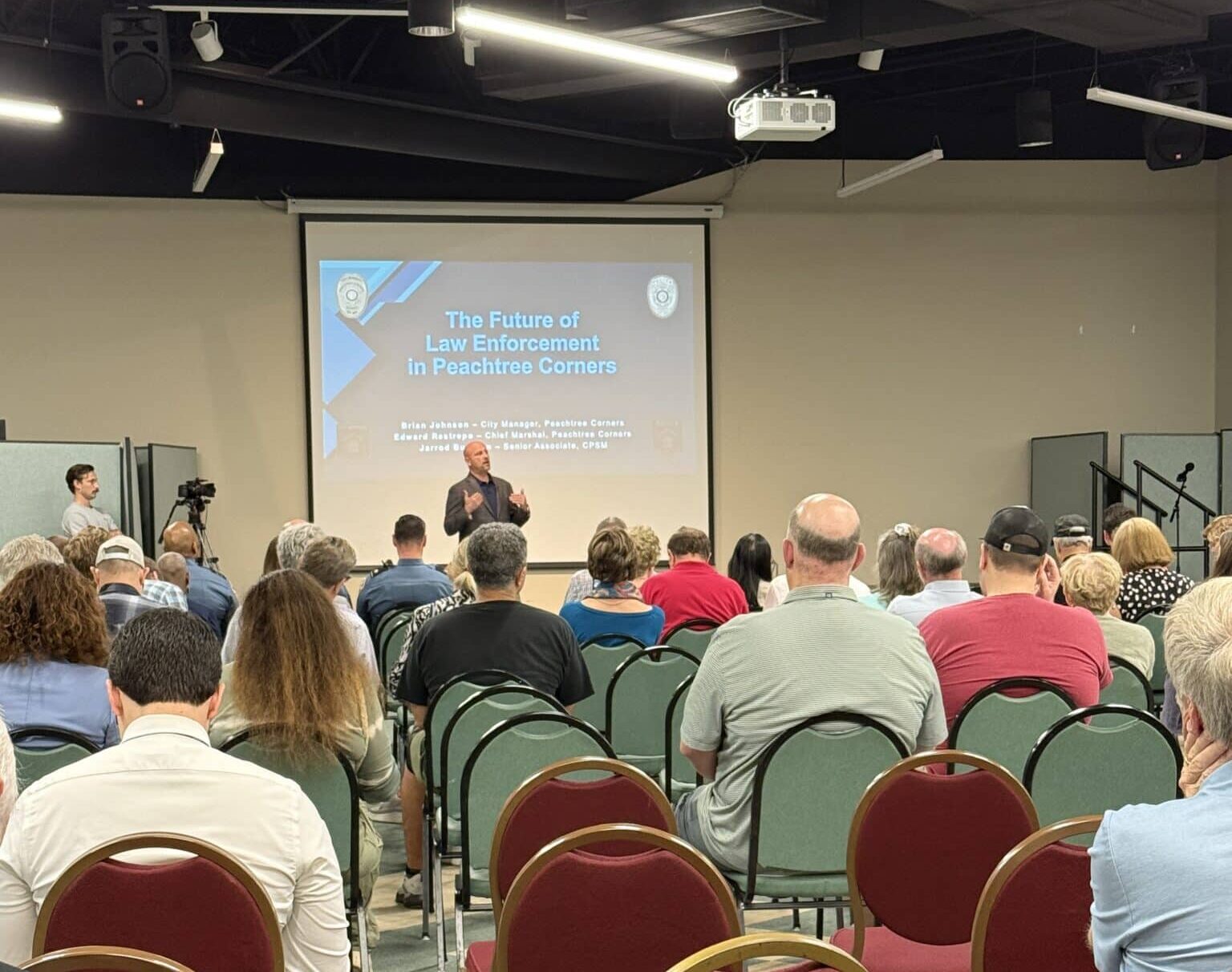
Although crime isn’t on the rise, and the Gwinnett County Police Department (GCPD) is fulfilling its role in fighting crime, the City of Peachtree Corners is asking residents, business owners and city stakeholders if they believe the city should form its own police department.
With over 100 people in attendance, City Manager Brian Johnson led the discussion about the future of policing in Peachtree Corners. He presented the findings from a survey conducted by the Center for Public Safety Management (CPSM), a nationally-recognized law enforcement consulting and training firm, as well as information about patrol officer staffing, response times, costs to tax payers and a potential timeline.
Ensuring public safety
Johnson kicked off his presentation by explaining that it is the duty of the mayor and city council to ensure public safety, including reviewing law enforcement.
“Maybe it needs to grow, maybe it needs to change its focus. But city council is the one that has the decision-making responsibility,” he said.
He was also adamant that this isn’t a done deal.

“I hit this point already, but I want to hit it again. This is the start of a conversation, a community conversation and feedback to council. There hasn’t been a decision,” he said. “Council has not received this presentation from me. They’re here to watch and learn from your feedback of this.”
Mayor Mike Mason was present at the meeting, along with all of the city council members except Eric Christ who was out of town and watching remotely.
Issues and obstacles
Johnson explained that the grounds for the inquiry were based on issues about communication, access to information and enforcement of city-specific ordinances. He cited an example where a city rule that private residences can’t be rented on a short-term basis like Vrbo or Airbnb wasn’t enforced by GCPD. An owner tried to circumvent the ordinance by only renting the outside of the house. A loud pool party ensued, and frustrated neighbors dialed 911.
“Officers showed up and they said, ‘We can’t enforce the city’s noise ordinance,’” Johnson said.
The first stage to fix this problem was creating the marshal program to bridge the gap between code enforcement and GCPD.
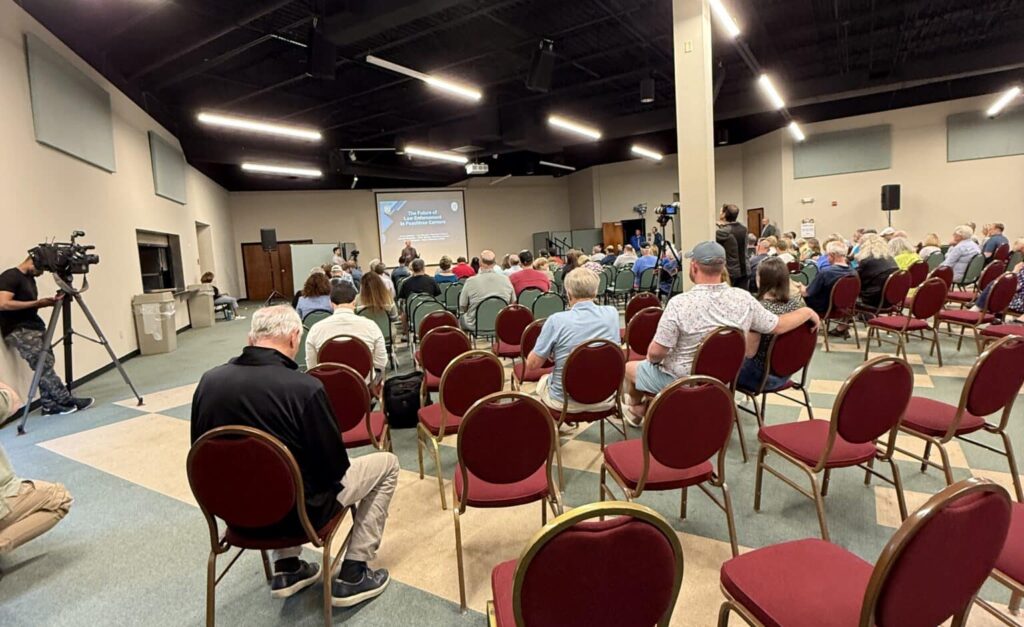
“[We thought] they would be able to enforce both local ordinance and state law, since they are a function of the city, and they could maybe be a force multiplier for Gwinnett since [marshals] don’t have to respond to 911 calls,” said Johnson.
But other issues arose shortly after the department was formed.
“We were still working towards getting that good balance, but we have been faced recently with a couple of things that make it harder for us,” said Johnson.
Seeking shared access
Instead of GCPD giving PTC marshals read-only, quick access to incident reports, dispatch calls and other information, the marshals department was required to file open records requests through the same process as any civilian.
“They were denied, as well as the city of Sugar Hill, [when] asked for the ability to see, not change, but see the computer-aided dispatch information, so that they would know where Gwinnett County police officers were; so that they could avoid stepping on their toes or maybe looking to support their efforts, and they haven’t been granted that,” said Johnson.
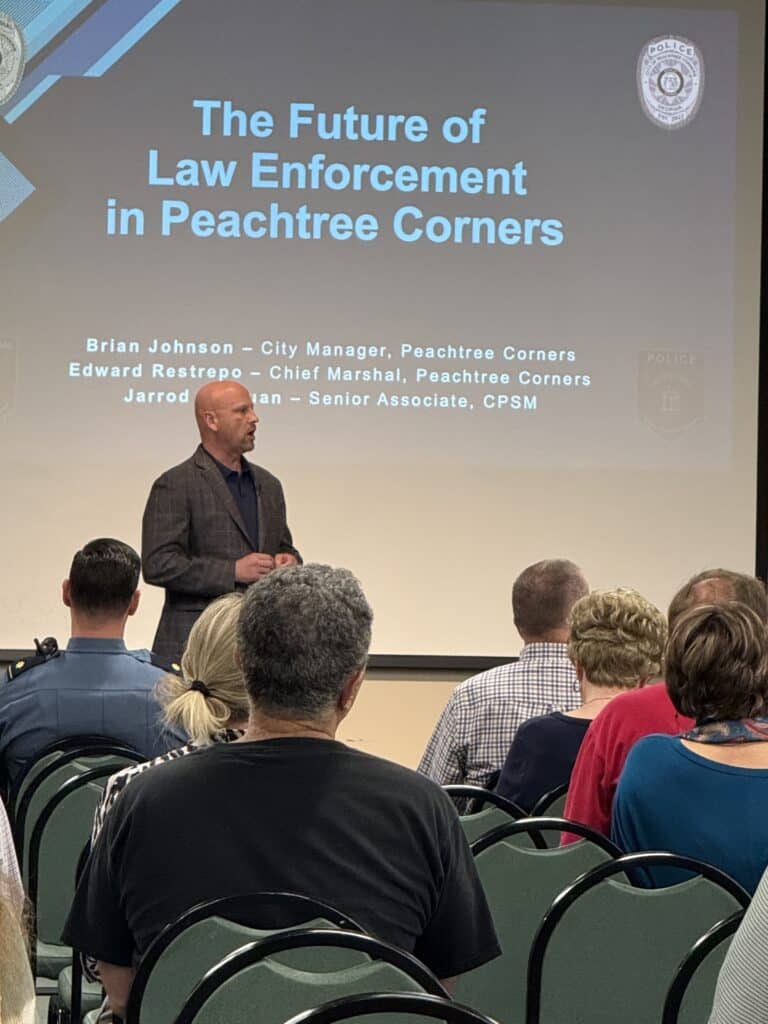
He added that the GCPD has video cameras on certain roadways that are used for various reasons, and law enforcement can use them when there’s crime in the area. Peachtree Corners marshals were denied access to those cameras.
“Conversely, we have a couple hundred cameras in the city, and we definitely want them to have access to them,” said Johnson. “So the frustration out of not being able to get that symbiosis between the marshals and police made us start thinking, all right, you know, is there another option?”
Community feedback
CPSM utilized data from GCPD to discern if Peachtree Corners could feasibly stand its own force. It also took into consideration crime trends, costs and many other factors. It recommended a 55-officer department, costing $12.1 million annually, with a $2.2 million upfront cost.
Comparing the two options to “renting vs. owning” the primary law enforcement agency in the city, Johnson presented pros and cons for each. Once the question-and-answer portion began, there was no obvious choice. Men and women, young and more advanced in age, had both similar and differing opinions.
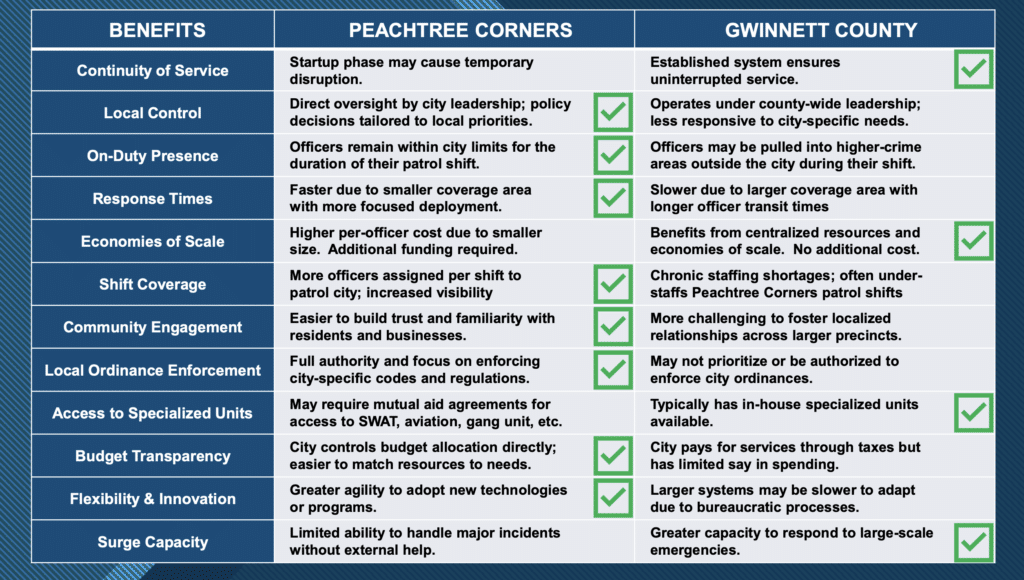
One young man, who identified himself as a local small business owner named Alexander, argued that with artificial intelligence increasing the efficiency of administrative tasks, perhaps the city wouldn’t need a full 68-man department of civilians and sworn officers.
Some accused the city of devising a solution in need of a problem. Others were concerned that paying approximately $100,00 for a study was throwing good money after bad.
But at the end of it all, the city is continuing to seek feedback and is encouraging everyone to make informed decisions. The meeting was taped and is available on the city website along with Johnson’s PowerPoint presentation, a copy of the study done by CPSM and a survey.
As far as a timeline goes, city officials would like folks to take the summer to mull it over and come back in the fall to take another look at the proposal.
Related
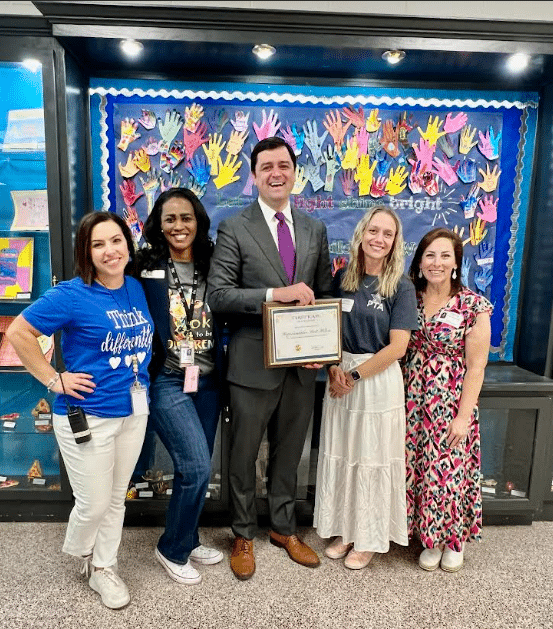
Simpson Elementary School celebrated Exceptional Children’s Week (ECW) last month with five days of special activities to recognize their special needs population and all of their exceptional students.
April 14–18 is set aside each year to celebrate children with disabilities, gifts and talents. This year’s ECW theme was Bridging Gaps and Building Futures, and the school was happy to take part.
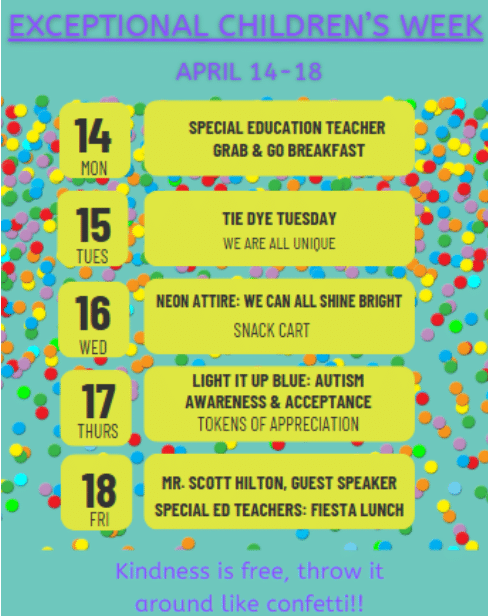
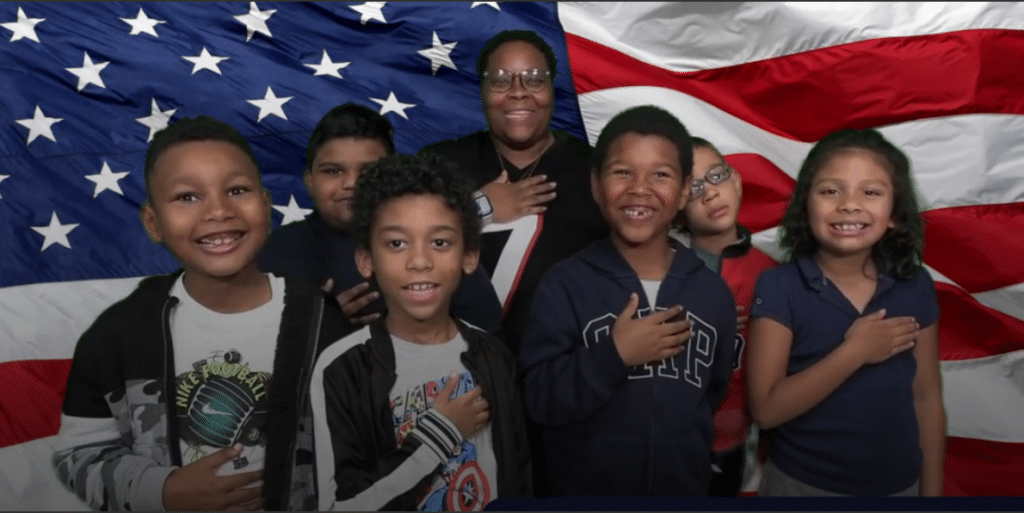
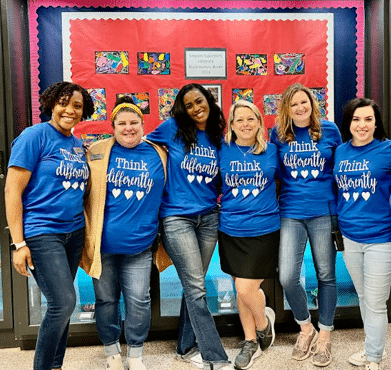
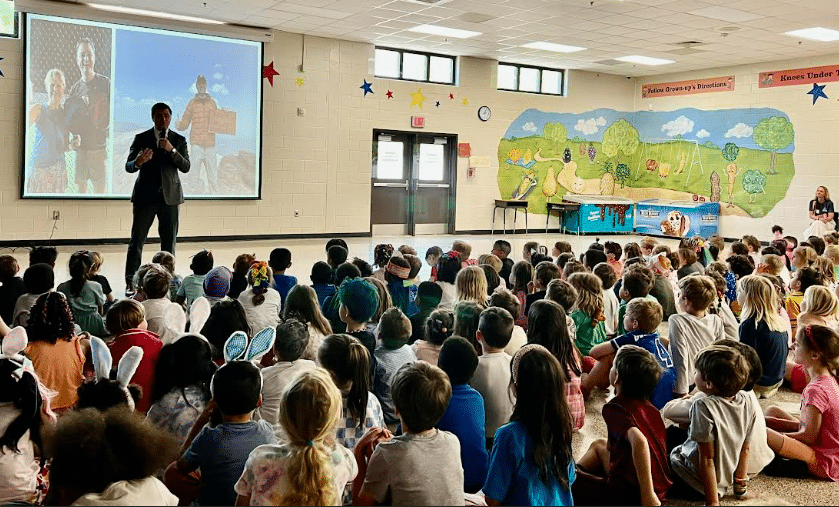
They highlighted each day of the week on the morning news with fun facts about notable people in society — and throughout history — who have overcome challenges with their disabilities, including actor Daniel Radcliffe (who has lived with dyspraxia for his entire life), Tom Cruise, Whoopi Goldberg, Frida Kahlo and Helen Keller.
Simpson Elementary’s technology team also pre-recorded various special needs classes reciting the Pledge of Allegiance every day of the week.
Guest speaker
To end their ECW with a bang, they invited former Simpson Elementary parent, State Representative Scott Hilton, to come in and speak to their K-2 classes about raising his son, Chase (who is autistic and now a student at Norcross High School), and how being different is okay.
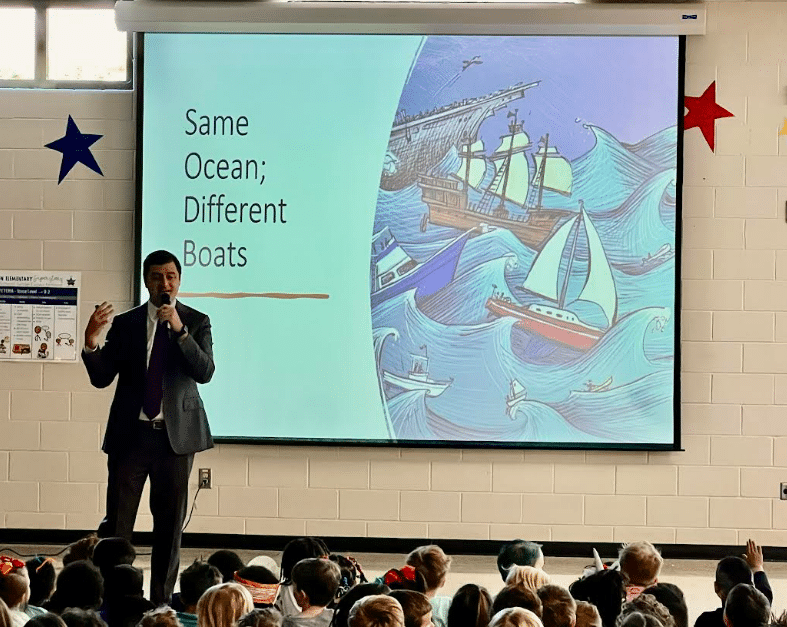
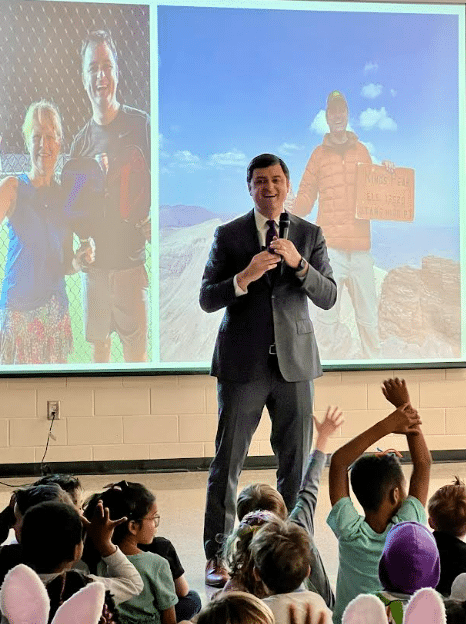
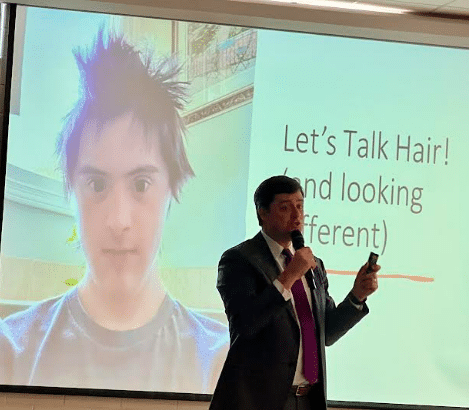
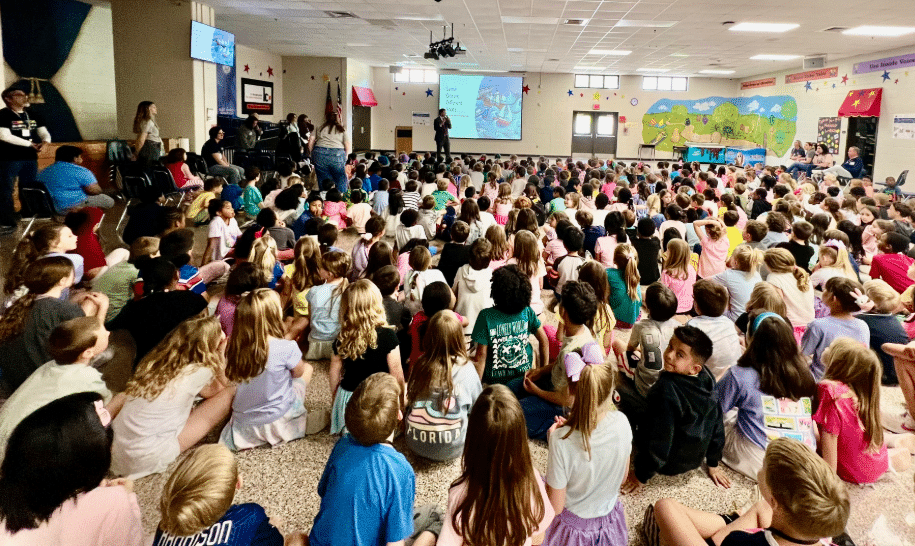
“Showing kindness and being inclusive is the best version of humanity,” said Dr. Taffeta Connery, Simpson Elementary School principal, in a statement about the event.
“Simpson Elementary has a special needs population of 214 (23%) of 946 students. [And] … we strive to ensure that our students are valued, recognized and instilled with high expectations for all.”
For more about Simpson Elementary, visit simpsones.gcpsk12.org.
Related
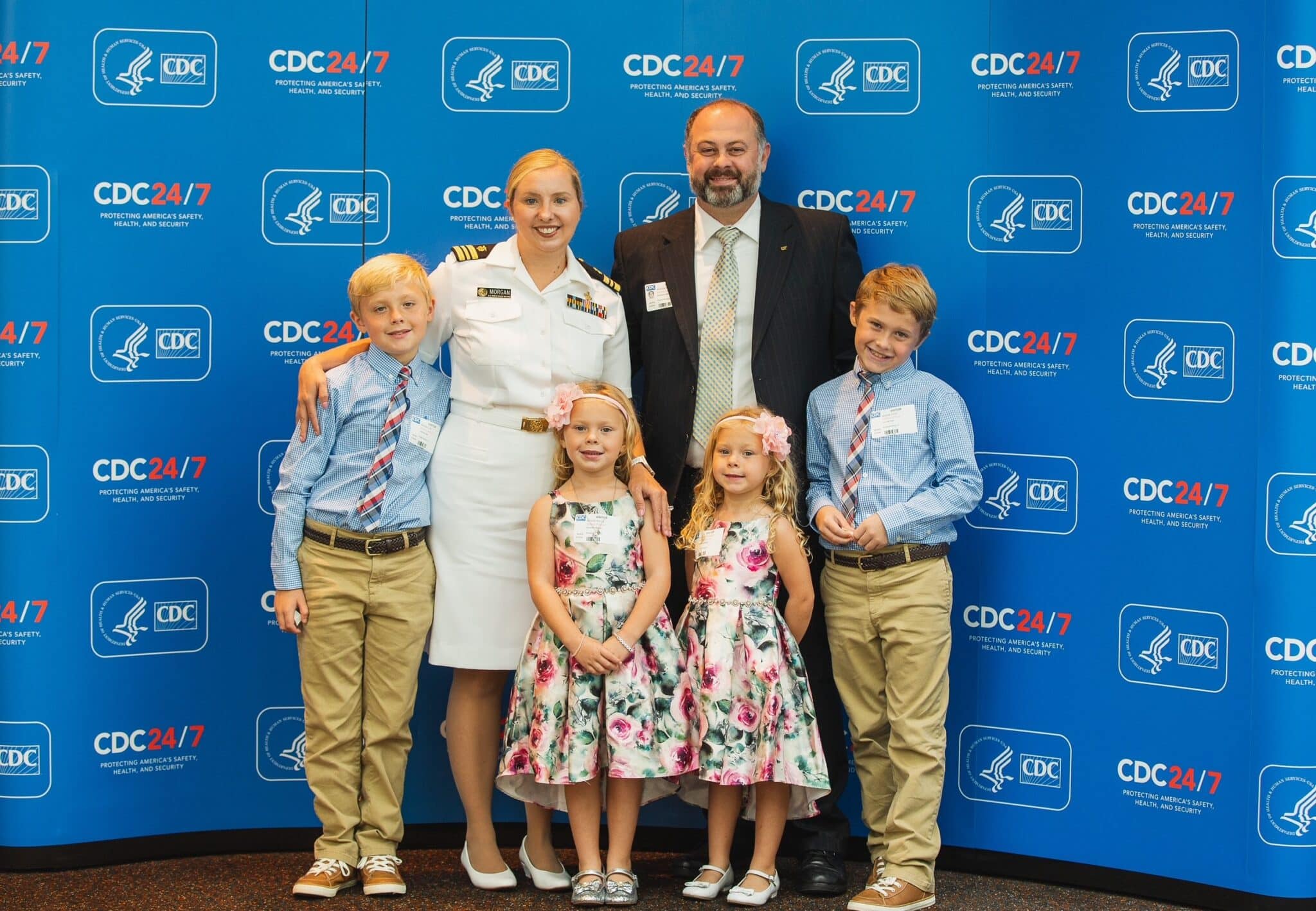
Motherhood comes with a lot of moving parts. For these Peachtree Corners moms, it also means leading teams, building careers and keeping the family schedule running. Most days, all at once.
This Mother’s Day, we’re spotlighting seven women in our community who are doing just that. They’re professionals in full-time leadership roles, showing up to strategy meetings by day and soccer games by night. They’re problem-solvers, planners, caregivers and coaches.
What connects them most isn’t just what they do, it’s how they do it. With intention. With humor. With support from partners, parents, friends and neighbors. And with a deep appreciation for the community they’ve built in Peachtree Corners.
Through their stories, we celebrate more than titles and to-do lists. We honor the quiet, constant work of showing up.
Tracy Lee
Tracy Lee leads with heart and vision as CEO of This Dot Labs, a software consultancy focused on helping businesses solve complex challenges through technology. Her engineering leaders collaborate with major clients like Stripe, DocuSign, Google, Wikipedia and Roblox. She’s passionate about her work.
“I love the mix of problem-solving and people leadership and knowing the work we do can make a real-world impact,” she said.
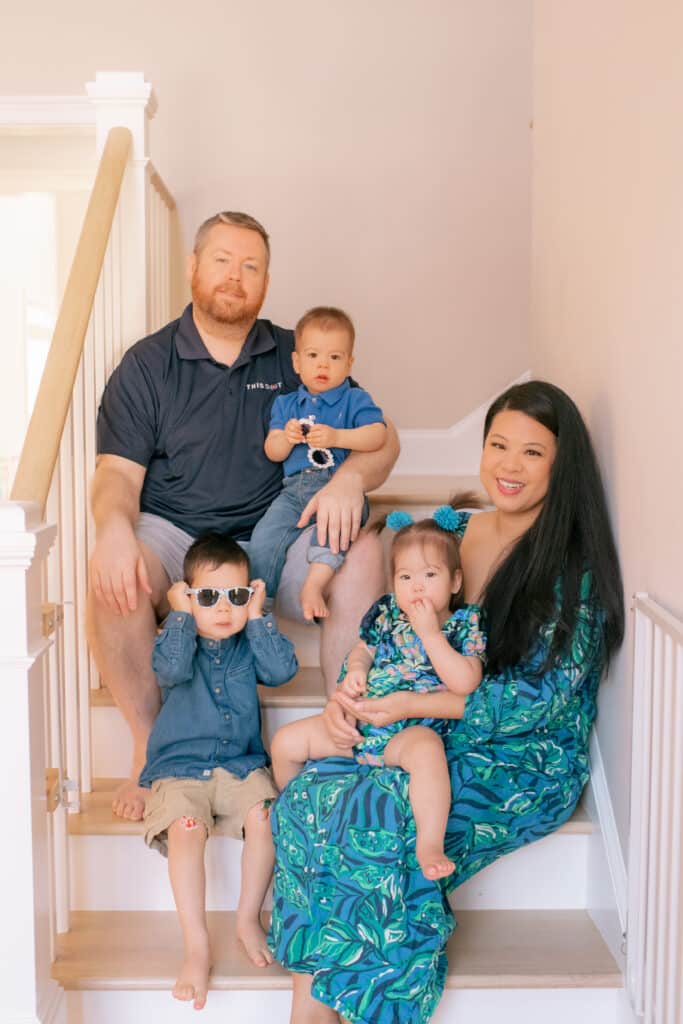
Tracy brings that same intentionality to her life at home, where she and her husband, Elliott Fouts, are raising three young children: William, 3, and twins Angelina and Marcus, who are 1.5. Despite the busy pace, Tracy is committed to being present in every role she plays.
“I have three full-time nannies and two part-time nannies, as well as girls around the neighborhood who are mama’s helpers to manage the chaos! With the help, we are able to do more and enjoy more time with our kids,” she said. “I try to be fully present, whether I’m in a meeting or building block towers in the living room. It’s never perfect, but we focus on what matters most in the moment.”
Tracy credits her support system for making it all possible. “I have an incredible partner and a strong support system between our nannies, friends and local community,” she said. “We have a local moms group for Asian moms called Georgia Asian Moms, and there are so many moms just in our neighborhood. It’s really great.”
Peachtree Corners has become a meaningful home base for the family. “We absolutely love it here,” she said. “There’s amazing programming for kids at The Forum every Tuesday in the spring and summer. It’s such a gem for young families.”
Weekends often include time outside and community adventures. “Sometimes the best hack is just piling everyone in the wagon and heading out for fresh air!” she said.
Tracy leans on a strong partner, a tight-knit group of friends and a local moms network. “It really takes a village,” she shared. “And I feel lucky to have one.”
Melissa Nicholson
Melissa Nicholson knows what it means to lead with heart and precision. As division vice president of program management & international solutions at Aya Healthcare, she helps internationally educated healthcare professionals enter the U.S. workforce.
“What I enjoy most is the opportunity to support these professionals in achieving their American dream,” she said. “While also contributing to improved patient outcomes across the country.”
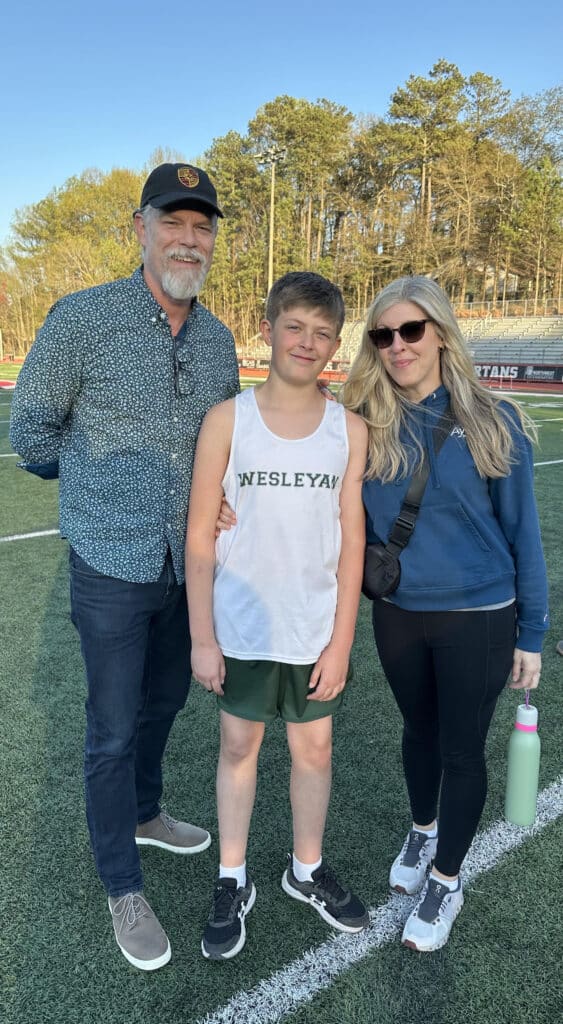
Melissa and her husband Greg recently celebrated 15 years of marriage. Their 12-year-old son, Luke, and a cat named Charlie bring a fun, loving dynamic of their own into the family. After relocating from East Atlanta a decade ago, they quickly embraced the Peachtree Corners community.
“It’s the people who make this community so special,” she said. “We’re truly grateful to count our neighbors as friends.”
Balancing an executive role with family life takes clarity and commitment. “I have to be very intentional with my time,” Melissa shared. She sets boundaries at work and makes sure her team knows when she’s off the clock for important family moments.
Wellness is a key part of her rhythm. “I recently started working out at Orangetheory Fitness,” she said. “I’ve noticed a significant boost in both energy and focus.” Sundays are for church and reflection.
When she travels for work, Greg holds it down at home. “We rely on each other to keep life running smoothly,” she said. “I’m grateful every day for that kind of partnership.”
On weekends, Melissa prioritizes quality time. Whether that’s a hike, pool day or baking something from scratch. “We’ve learned that if we don’t prioritize those moments, the weekends can quickly get taken over.”
Diva Hicks
For Diva Hicks, work isn’t just a job, it’s personal. As creative senior manager at CURE Childhood Cancer, her mission runs deep.
“At 12 years old, my sister was diagnosed with cancer,” she said. “CURE, in its early days, was a resource for my family.”

Her sister survived and now thrives. That experience shaped Diva’s career and continues to inspire her today. “This is my opportunity to give back to CURE for what it did for my family,” she said. “It’s rare to find a place where your purpose and passions collide.”
CURE also welcomes her whole family into the fold. “I get to bring my kids to events all the time,” she said. “They love feeling like they are a part of my work.”
Diva lives in Peachtree Corners with her husband John, their children Adair, 8, and Tripp, 6, and two golden doodles. “There is a sense of community here that I think is special,” she said.
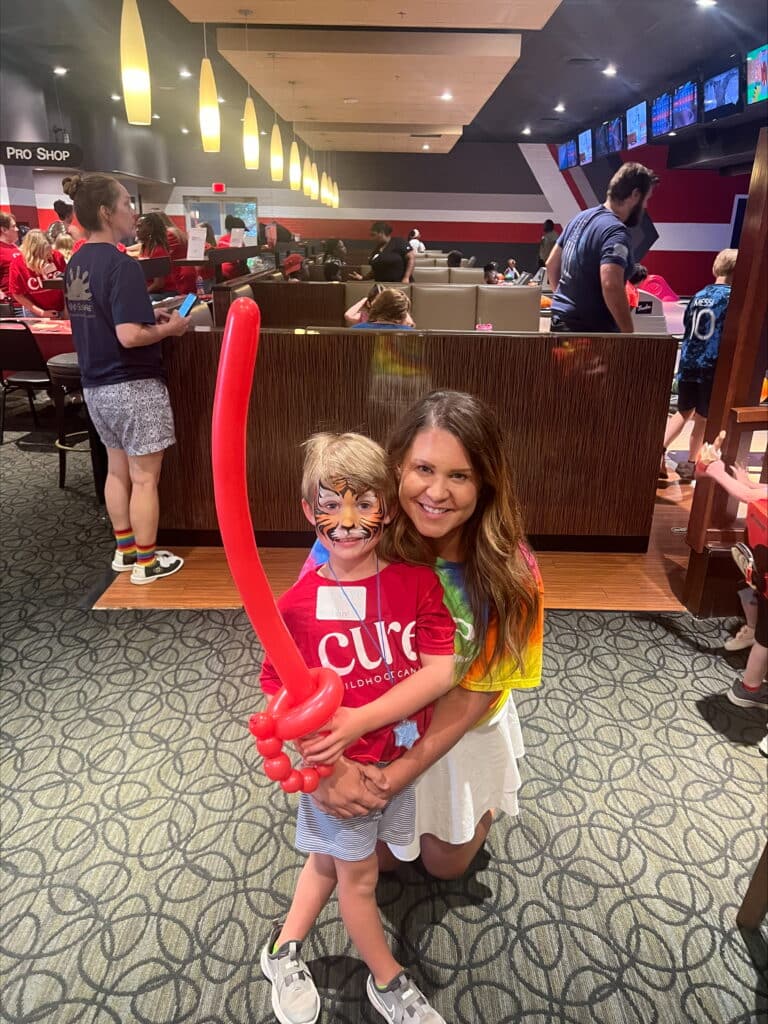
Balance is a daily effort. “John and I have tackled who helps with homework and on what days,” she said. “I would not be able to be the mom that I am without my village.”
She leads school committees and never misses events. “Is it easy? No,” she said. “But I honestly say, it’s not easy for any parent.”
Diva’s motivation is clear. “I want Adair to look at me and see that she can be a mom and have a career too.”
The family stays grounded with tennis weekends and careful planning. “We live by our calendar,” she said. “The more prepared I am, the easier life is.”
Kate Martin
Kate Martin knows how to bring structure to busy systems. As senior director of financial planning and analysis at Alloy Roofing, she finds energy in collaboration and clear strategy.
“In this role, I work closely with various teams across the business,” she said. “It supports the company’s strategy and performance.”
Kate and her husband, Nathan, are raising two children, 14-year-old Elliot and 10-year-old Evan, in Peachtree Corners. After ten years in the area, she credits the people for making it feel like home. “Life wouldn’t be the same without the relationships we’ve built here,” she said.
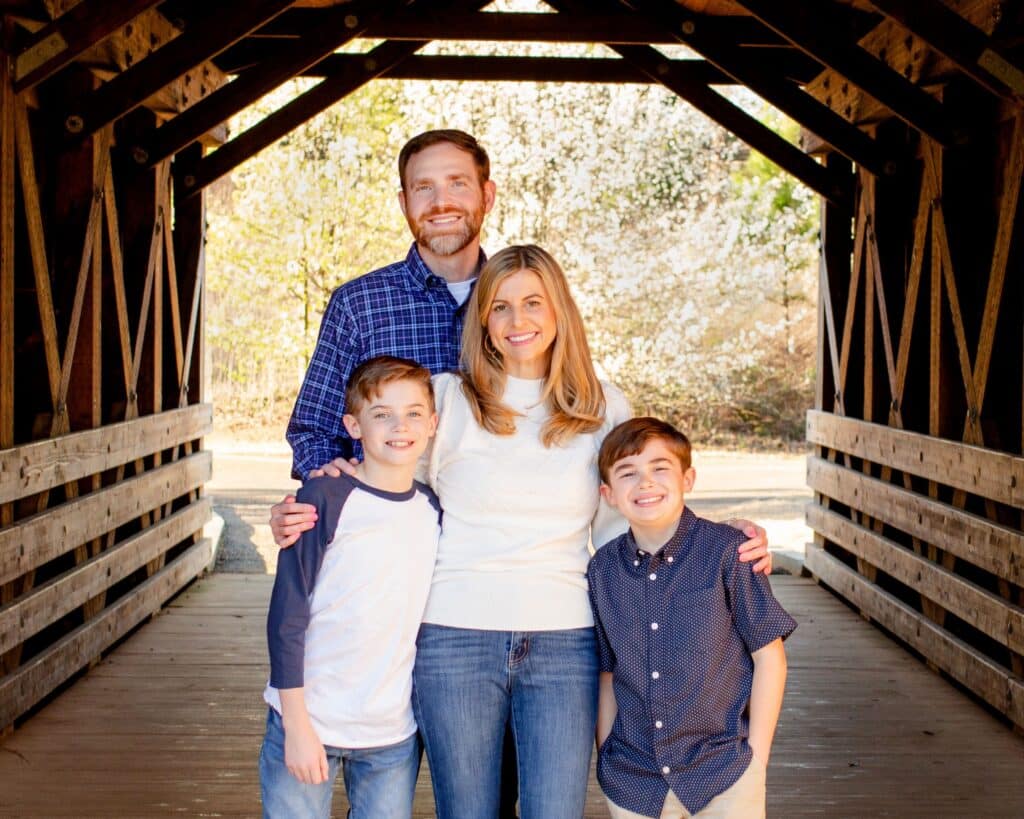
Balance starts with planning. “We keep a central Google calendar synced with all the family commitments that we review daily,” she said. “On Sundays we write on the kitchen boards.” Their chalkboard becomes the weekly roadmap, from meals to responsibilities.
“Seeing things laid out visually keeps me from overcommitting,” she added.
The family stays grounded by recognizing progress. “What keeps me motivated is celebrating both the big and small wins together,” she shared. “Sometimes, making it through the week is a victory in itself.”
Kate relies on a strong network. “We are very fortunate to have my parents nearby,” she said. “I also have an amazing network of women here in Peachtree Corners that I rely on.”
Her favorite hack? “An app Nathan created to help manage our calendars,” she said. “He created a solution to integrate these webcal subscriptions into a central subscription hub.” It’s called Skedj, and they’re piloting it now. “If you know this struggle and want to help us pilot the app, check out skedj.co!”
Linda Luna
As vice president at RSUI, Linda Luna manages risk while empowering people. She leads a team of underwriters who handle professional liability and cyber insurance. “I really enjoy my job because of its dynamic nature and the opportunity to help people in meaningful ways,” she said.
Whether she’s mentoring her team or protecting clients’ businesses, Linda finds value in impact. “It’s rewarding to know that my work has a positive impact on both my colleagues and our clients.”
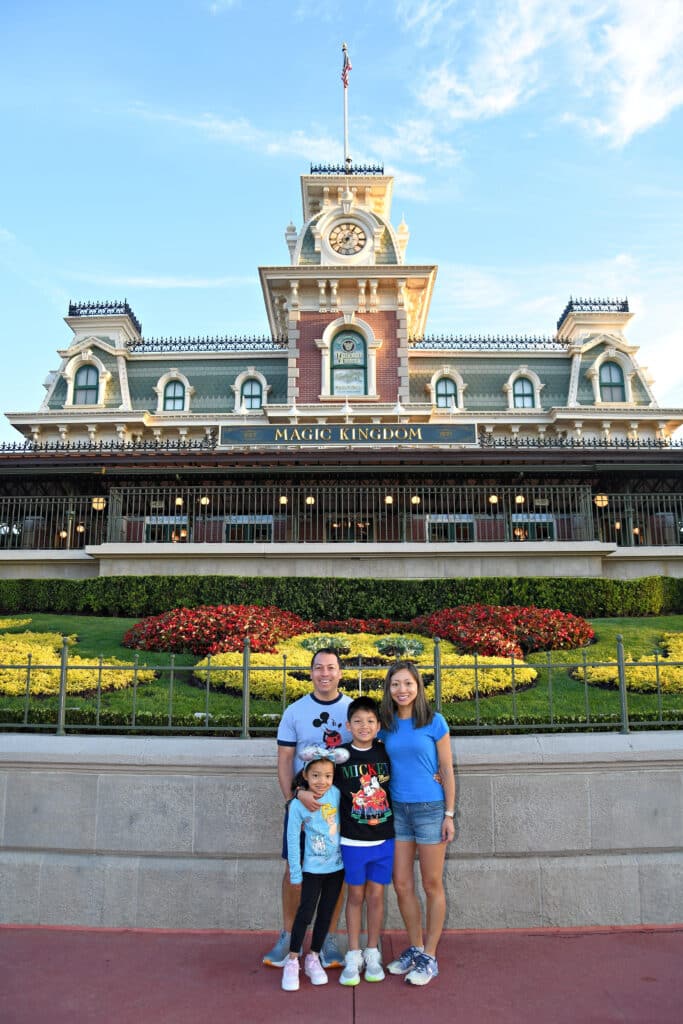
She and her husband, Ruben, are raising their two children, Dawson, 10, and Ava, 6, in Peachtree Corners. Her parents, though not under the same roof, are a constant part of daily life. “They help keep things running smoothly on the home front,” she said.
After nine years in the community, Linda has grown to love its blend of charm and convenience. “There is always something to do,” she said. “Whether it’s grabbing a bite at Ted’s or spending time with friends at Town Center.”
Balance comes from structure. “By establishing a solid schedule and sticking to it, I can ensure that my work commitments are met,” she said. “Being fully present allows me to strengthen my connection with my loved ones.”
When things get busy, she takes a practical approach. “Breaking it down into smaller, manageable tasks makes it much more approachable,” she said. “I remind myself to keep the bigger picture in mind and not sweat the small stuff.”
Linda’s support system is strong. “It truly takes a village, and I’m so grateful for mine,” she said. The family’s favorite tradition? A beach trip to 30A every May. “It’s our way of unwinding, reconnecting and making lasting memories together.”
Allison Blasetti
Allison Blasetti holds a national leadership role at Transamerica in the employee benefits division — a position that constantly challenges and motivates her. “What I enjoy most is the opportunity to use my talents to help my team,” she said. “I’m always growing and learning.”
She and her husband, John, are raising daughters Annie Mae, 8, and Olive, 6, in Peachtree Corners, where they’ve built strong ties in the community. “The amenities in our city provide many opportunities to run into friends around town or plan meet-ups,” she said.
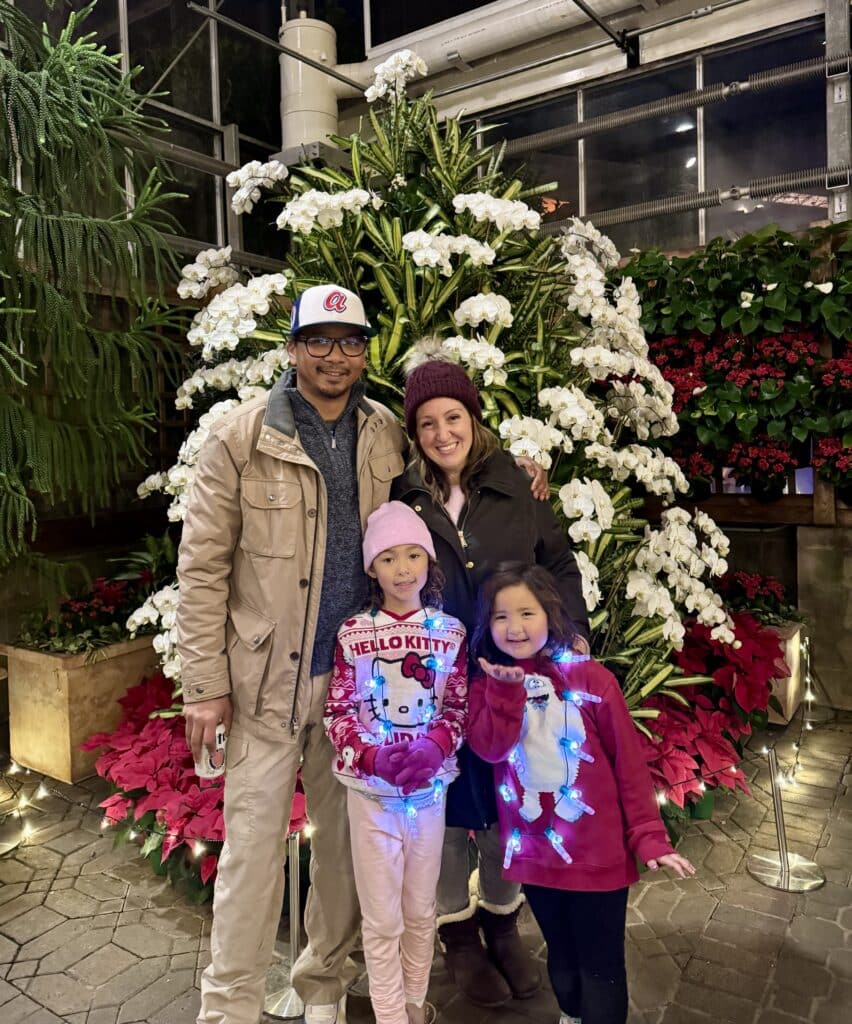
Allison works from home and prioritizes clear boundaries. “I turn off my app notifications because it quickly pulls me back in to work,” she said. “I also have a dedicated workspace in my house where I can leave at the end of the workday.”
She’s developed the habit of resetting her mindset, as well. “I quickly recognize [when] I’m mentally ‘at work’ and actively redirect my thoughts back to being in the present moment.”
Allison’s mornings begin at Burn Bootcamp, where she finds motivation and connection. “Spending an hour with my Burn community helps me get grounded for the day,” she said.
To stay organized, she and her husband use a shared family calendar. Her mom steps in often, especially when work travel ramps up. “I really don’t know what we would do without her.”
On weekends, Allison coaches Olive’s soccer team with the Peachtree Corners Football Club. “It brings me so much joy to be outside, see my soccer friends and watch my girls have fun,” she said. “Coaching makes it even better because I get to support the community that means a lot to me.”
Samantha Morgan
Samantha Morgan is a commander in the U.S. Public Health Service, currently assigned to the Centers for Disease Control and Prevention. Over her career, she’s responded to major public health threats, including Ebola, Zika and COVID-19. Today, her work centers on injury prevention, with a focus on issues like suicide, drowning and traumatic brain injury.
“What I enjoy most is being part of CDC’s mission to save lives and protect people,” she said. “I’m proud to contribute to work that makes a tangible difference in communities across the country.”
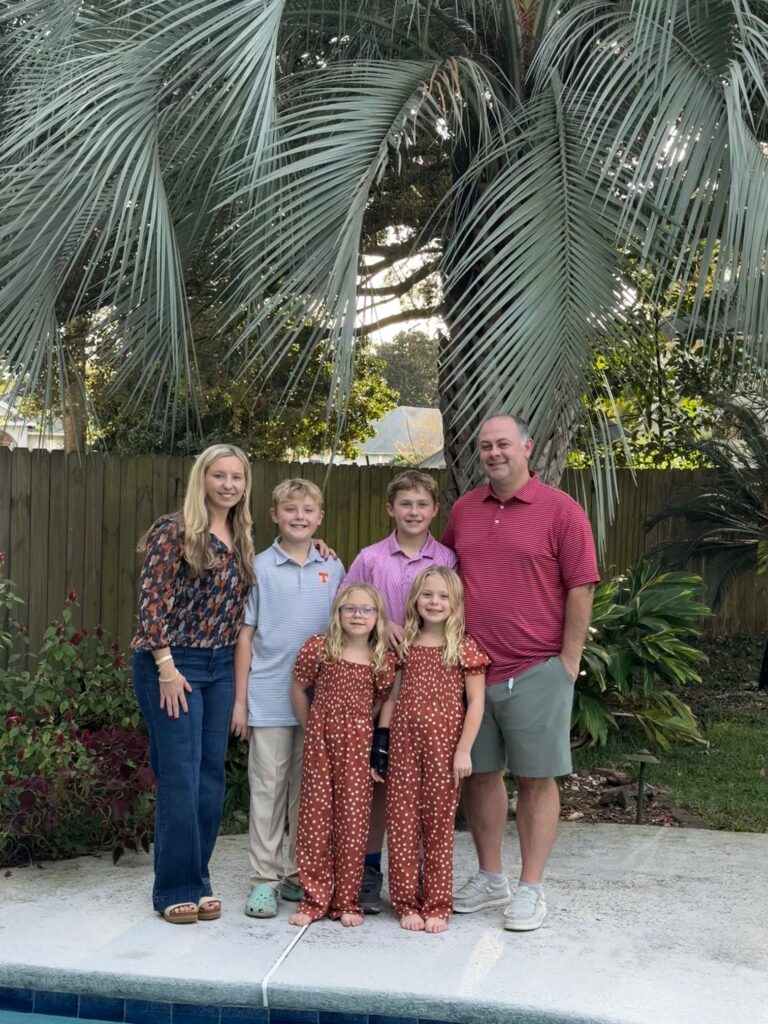
At home in Peachtree Corners, Samantha and her husband, Brian, are raising two sets of twins. Luke and Elliot are 12-years-old and love baseball, golf, basketball and band. Charlotte and Noelle are 8-years-old and enjoy piano, tumbling and tennis. “Life with four kids is wonderfully busy,” she said. “I often joke that I’m an unpaid Uber driver!”
After more than a decade in the neighborhood, Samantha credits their support system for helping them manage the day-to-day. “Our neighbors and friends — our village — have supported us through the hardest moments and celebrated life’s greatest joys with us,” she said.
Structure is key to keeping things on track. “We live and breathe by our family calendar,” she said. “Shared schedules, group texts and carpooling help us keep things running.”
Her children remain Samantha’s biggest motivators. “They know, ‘mom’s going to work to help make the world a safer place,’” she said.
The family also leans on routines and simple joys. “Checklists are my go-to mom hack,” she shared. One of their favorite traditions is make-your-own-pizza night. “It’s messy, silly and something we all genuinely look forward to.”
The seven women featured here offer a glimpse into the lives of working moms in Peachtree Corners. Each one balances career, family and community with care and intention. They are just a few of the many women — both working and stay-at-home — who nurture, organize and uplift the people around them every day.
Whether leading teams or guiding their children, mothers across this community show up with strength, love and quiet determination.
You’ll find this story in the May/June issue of Peachtree Corners Magazine, available in print and digital edition.
Related
Read the Digital Edition
Subscribe
Keep Up With Peachtree Corners News
Join our mailing list to receive the latest news and updates from our team.
You have Successfully Subscribed!

Official City Merchandise Line Debuts This Saturday at Town Green

Peachtree Corners Hosts Discussion About the Future of Local Policing

Executive Function: A Tribute to Working Moms

Peachtree Corners Grows Business Opportunities Through Economic Development

D1 Training Brings New Fitness Concept to Peachtree Corners

Simpson Elementary Marks Exceptional Children’s Week

City of Peachtree Corners Awarded Certificate of Achievement From GFOA for Seventh Straight Year

Atlanta’s Dog Howl-O-Ween Festival Moving to Peachtree Corners for 2025

MomoCon 2025 to bring 60,000 Fans to Atlanta for a Weekend of Cosplay, Animation, Gaming and Music

Local Special Olympics Pickleball Team Honored with State House Resolution

Atlanta’s Dog Howl-O-Ween Festival Moving to Peachtree Corners for 2025

D1 Training Brings New Fitness Concept to Peachtree Corners

Peachtree Corners Hosts Discussion About the Future of Local Policing

City of Peachtree Corners Awarded Certificate of Achievement From GFOA for Seventh Straight Year

Simpson Elementary Marks Exceptional Children’s Week

Executive Function: A Tribute to Working Moms

Light up the Corners [Video]

Capitalist Sage: Business Leadership in Your Community [Podcast]

Cliff Bramble: A Culinary Adventure through Italy

Top 10 Brunch Places in Gwinnett County

A Hunger for Hospitality

THE CORNERS EPISODE 3 – BLAXICAN PART 1

Top 10 Indoor Things To Do This Winter

The ED Hour: What it takes to Remove Barriers from Education

Peachtree Corners Life
Topics and Categories
Trending
-
Pets & Animals5 days ago
Atlanta’s Dog Howl-O-Ween Festival Moving to Peachtree Corners for 2025
-
Around Atlanta3 days ago
MomoCon 2025 to bring 60,000 Fans to Atlanta for a Weekend of Cosplay, Animation, Gaming and Music
-
Sports4 days ago
Local Special Olympics Pickleball Team Honored with State House Resolution



